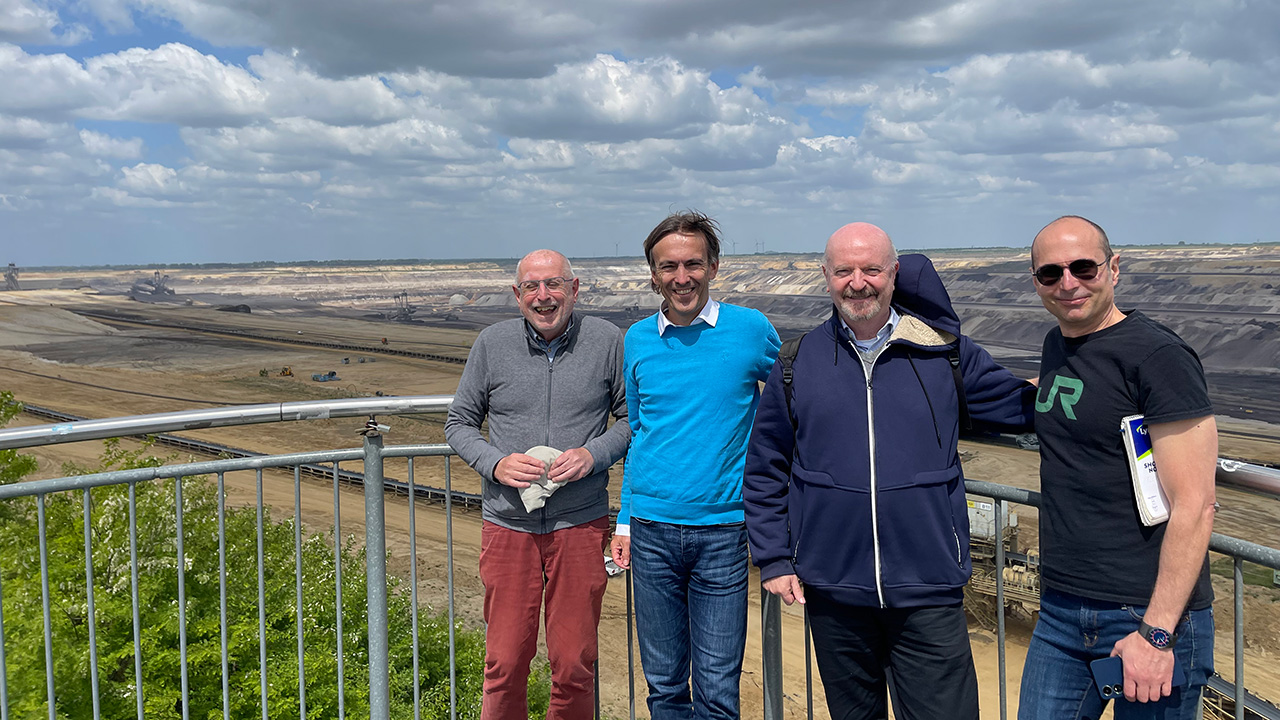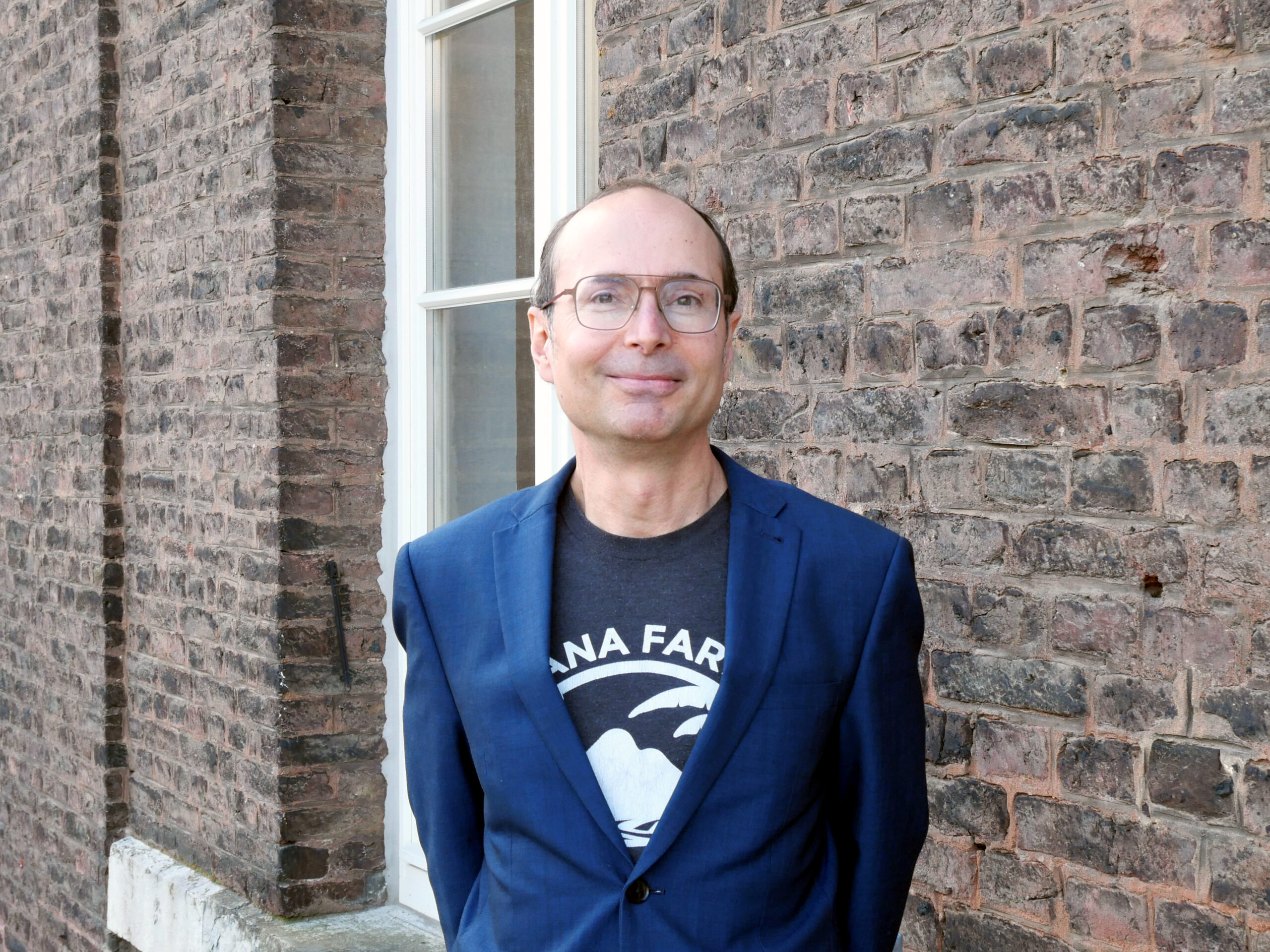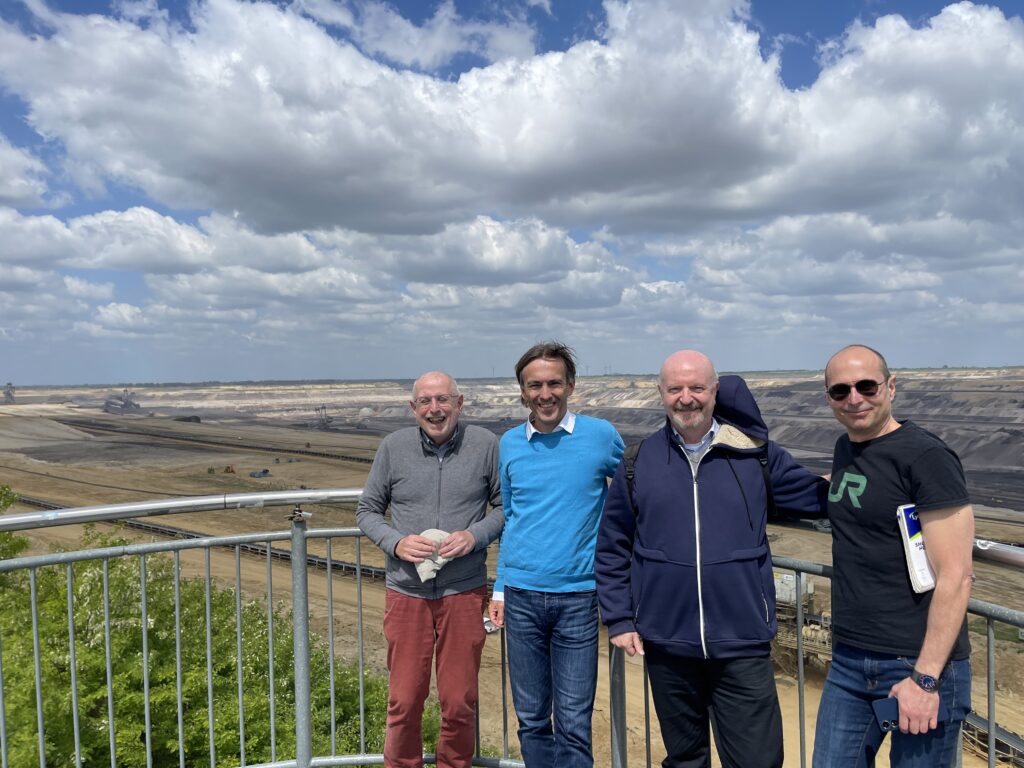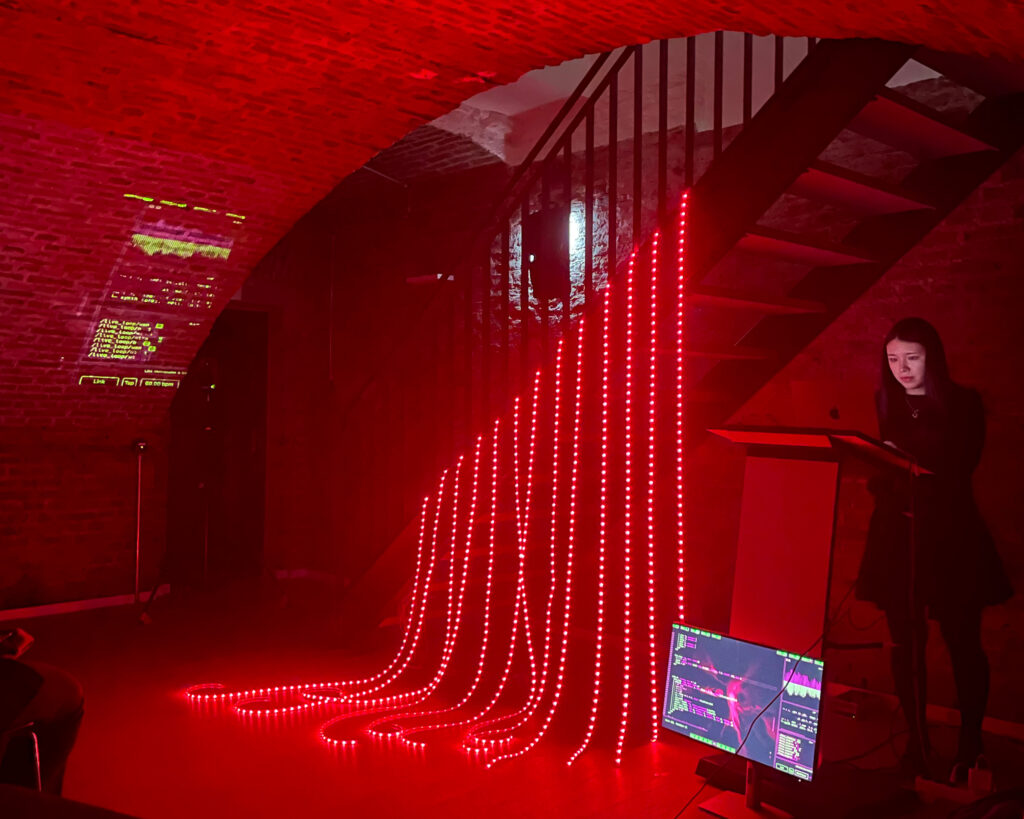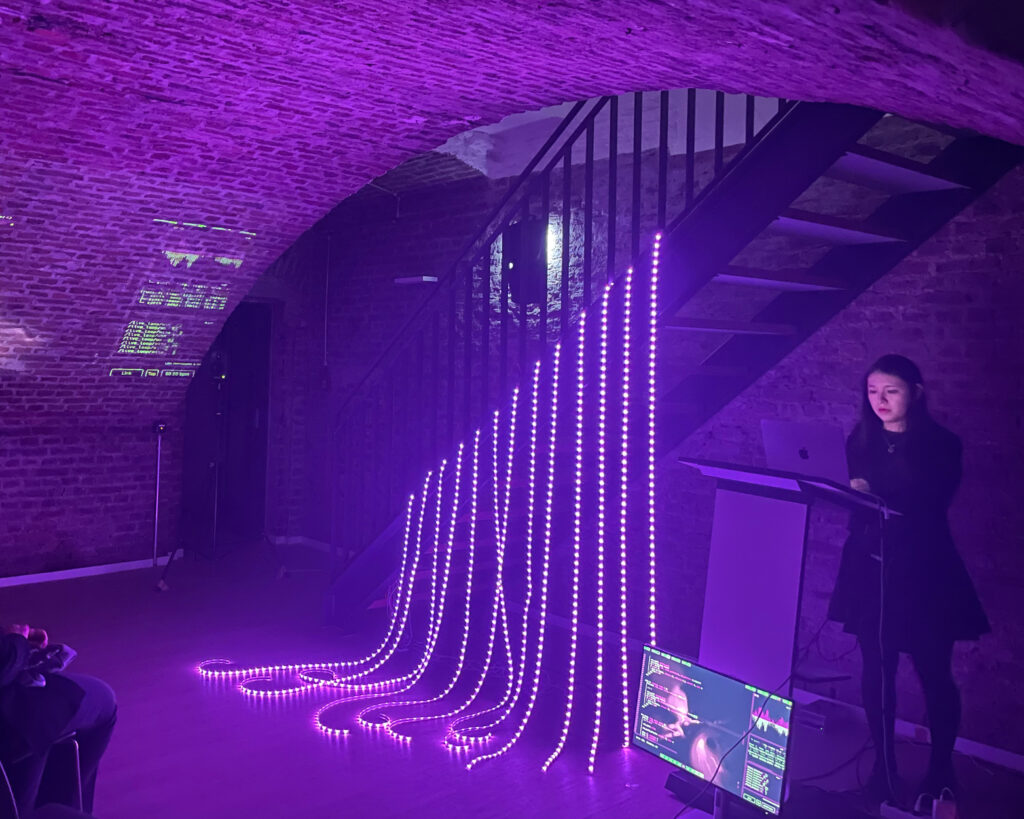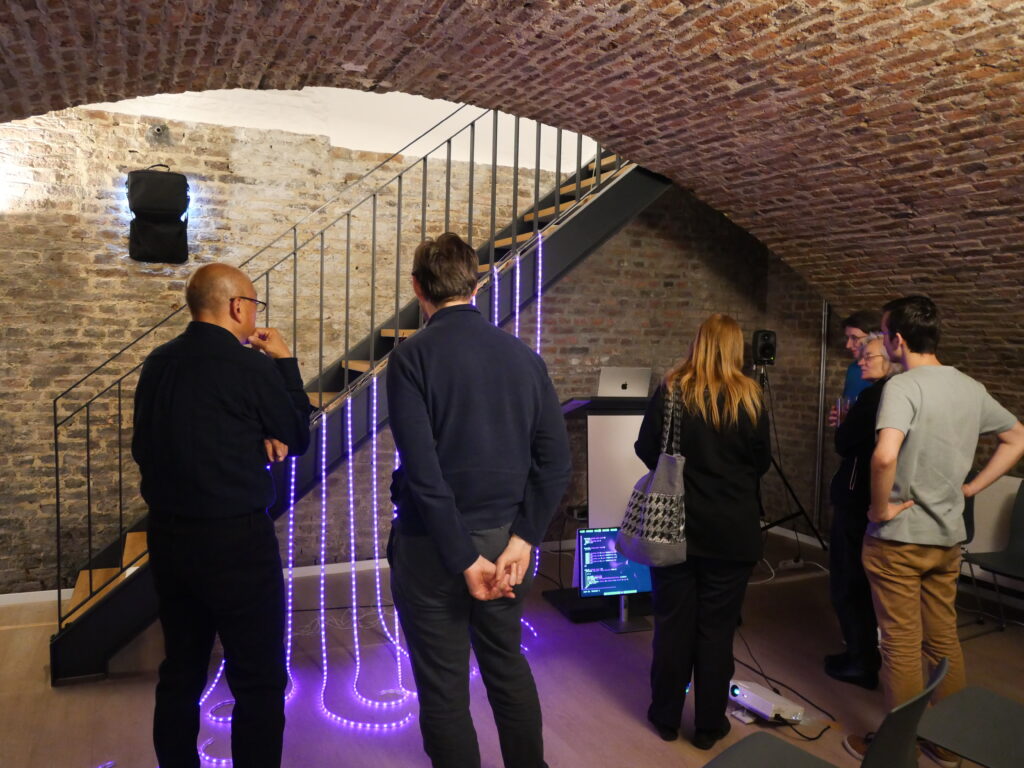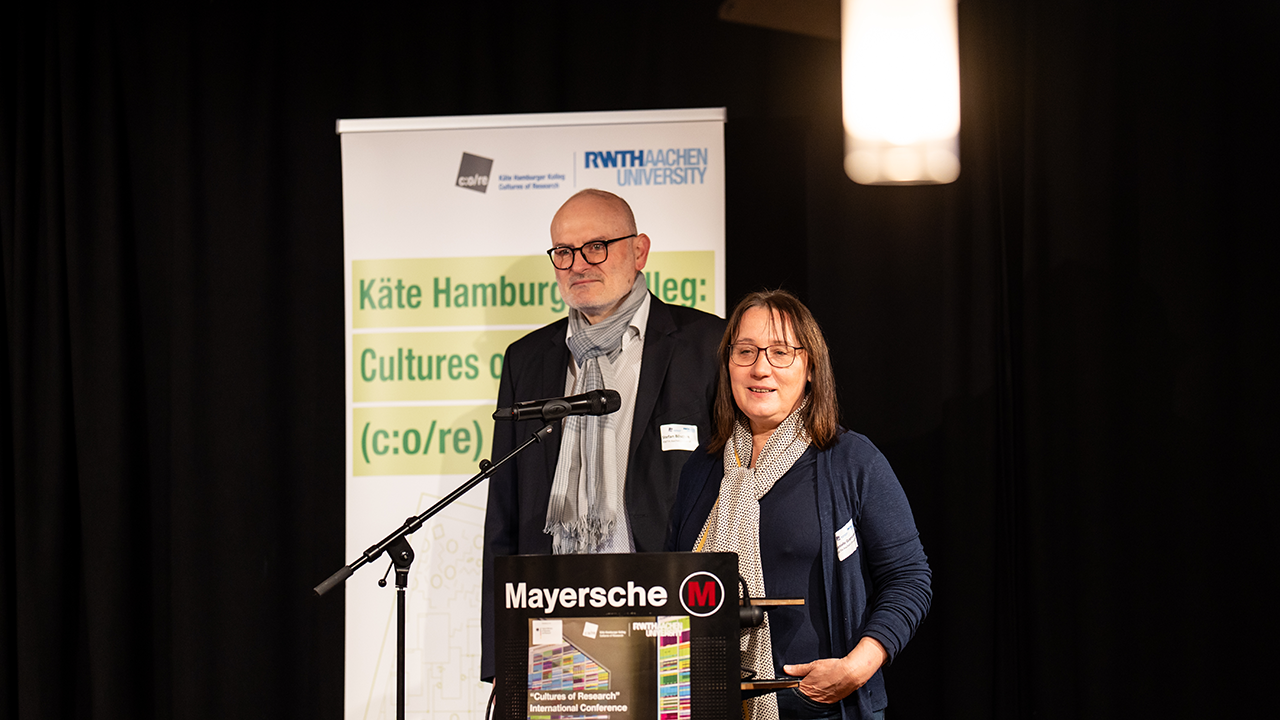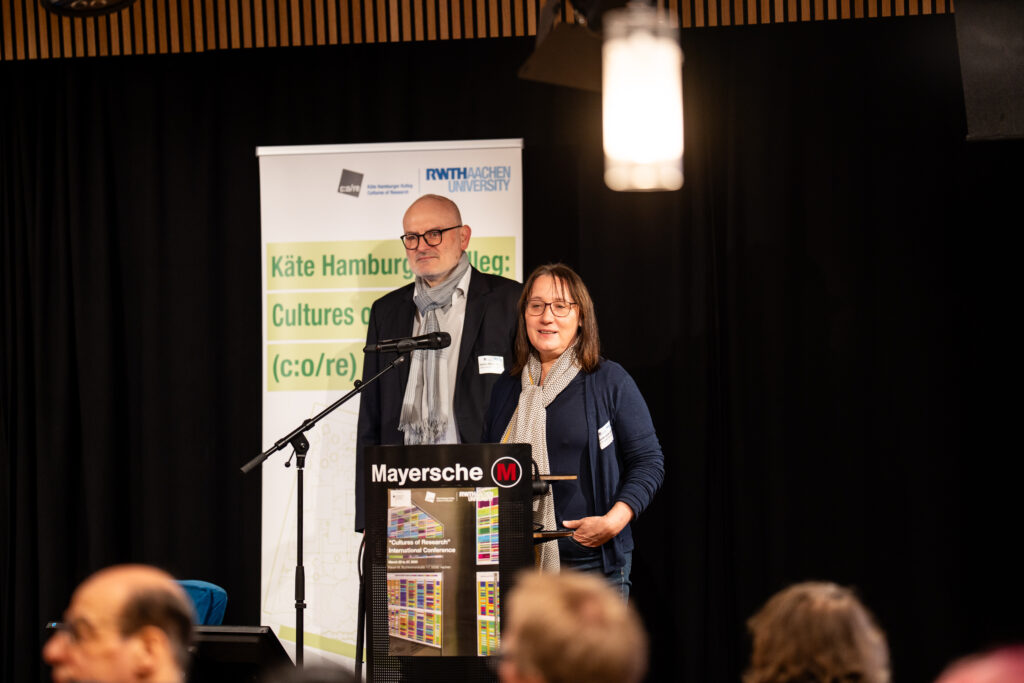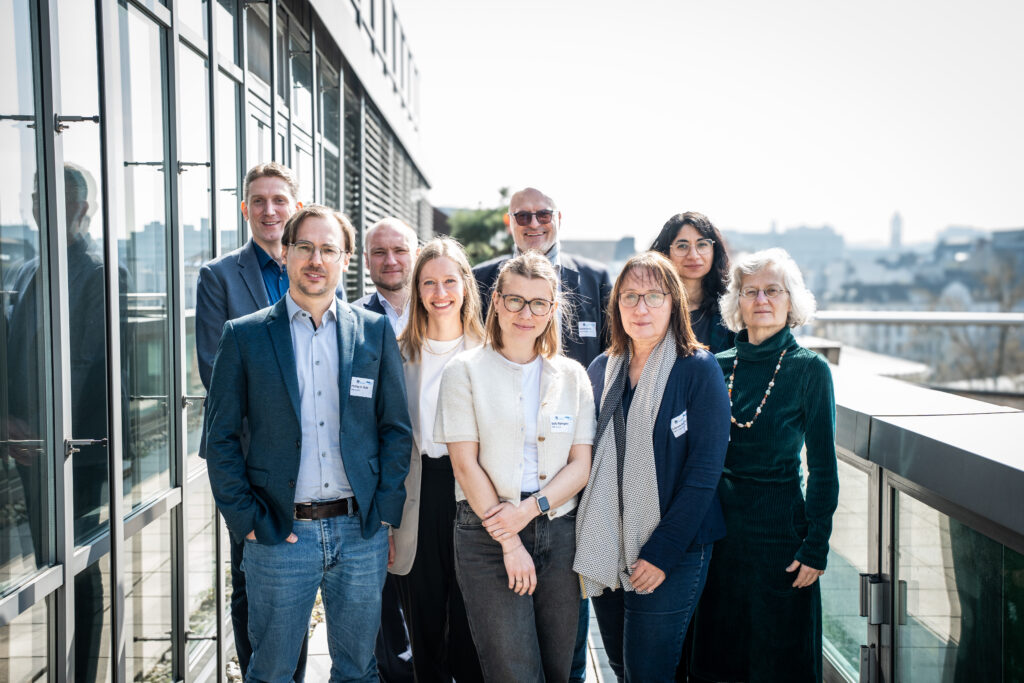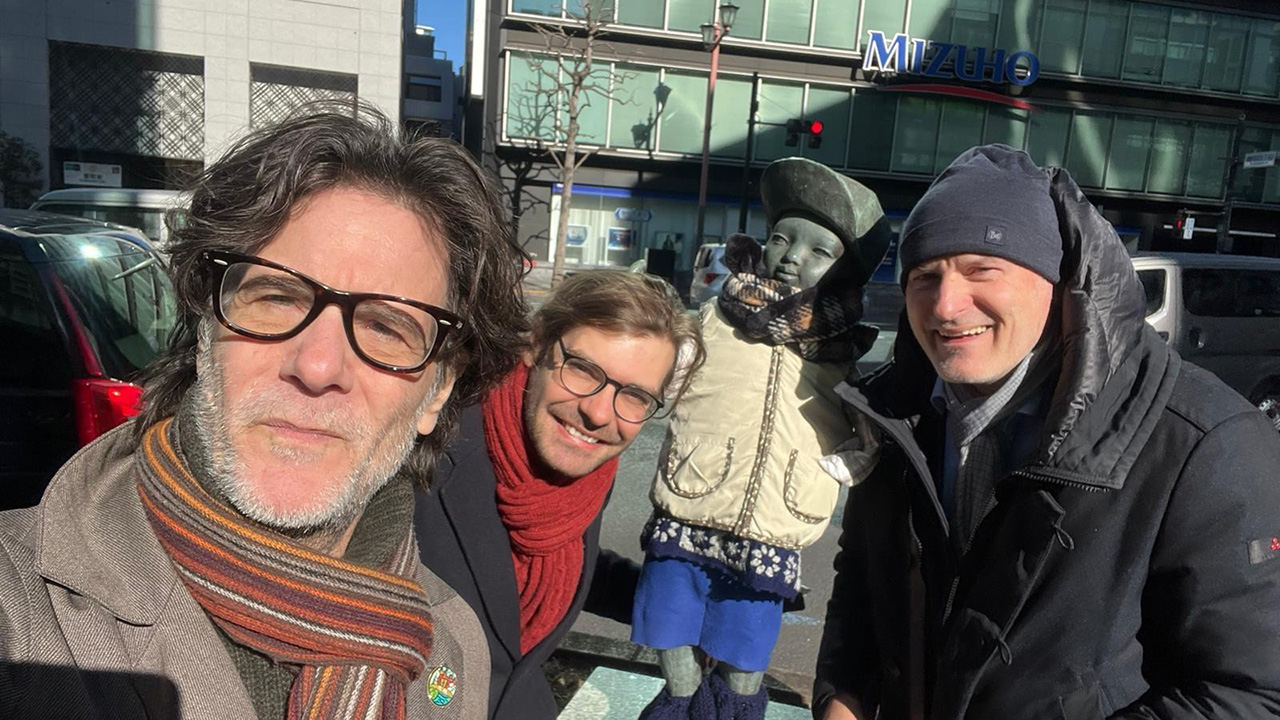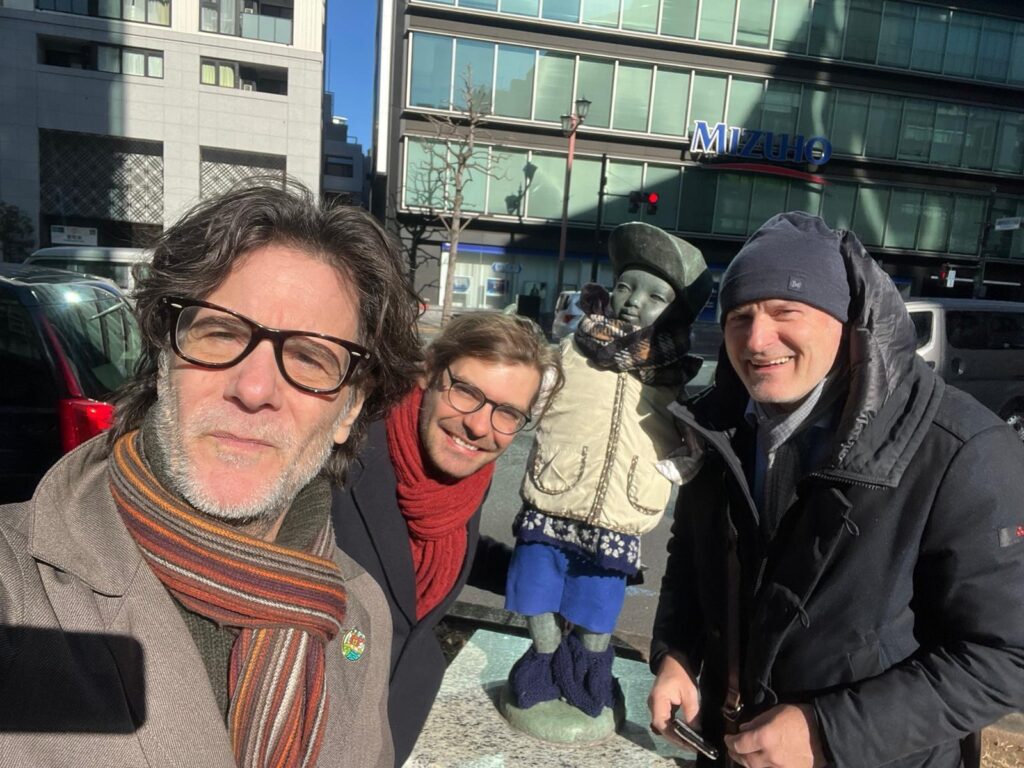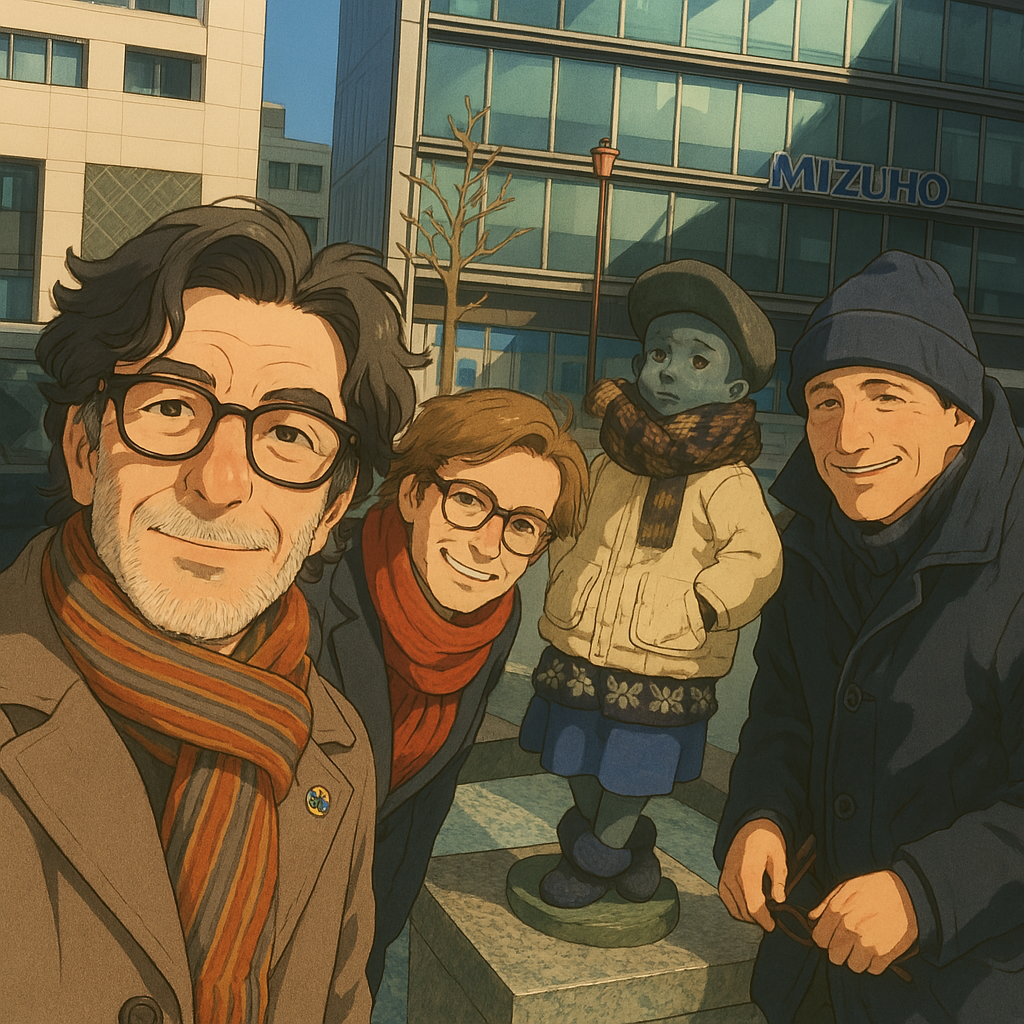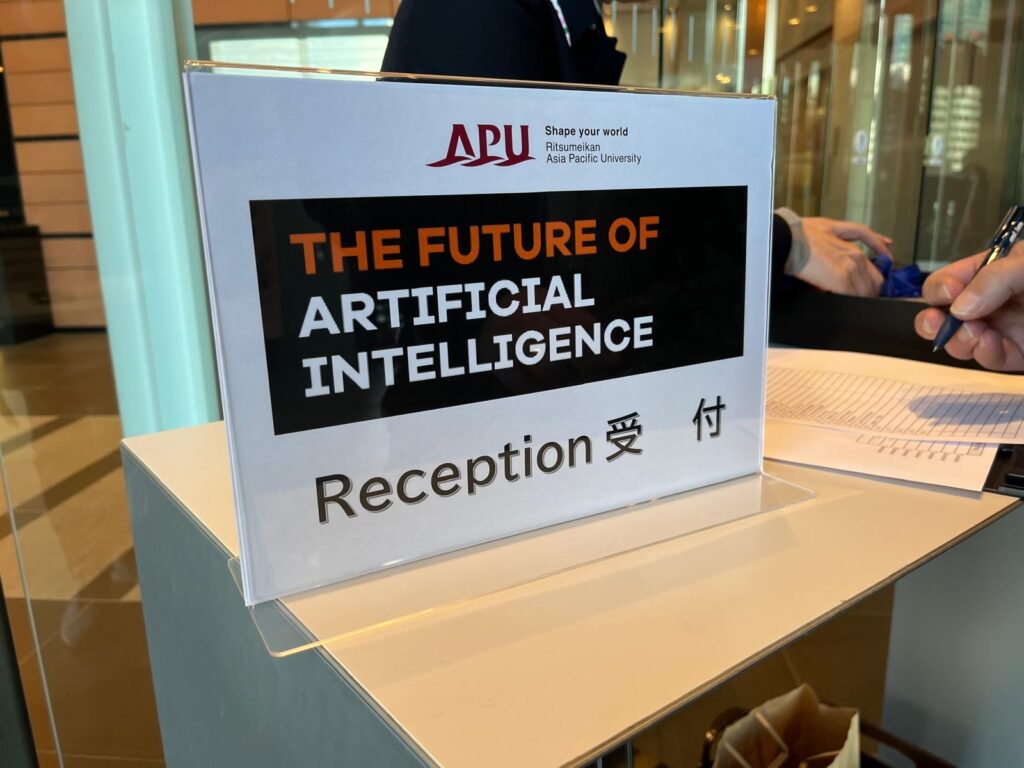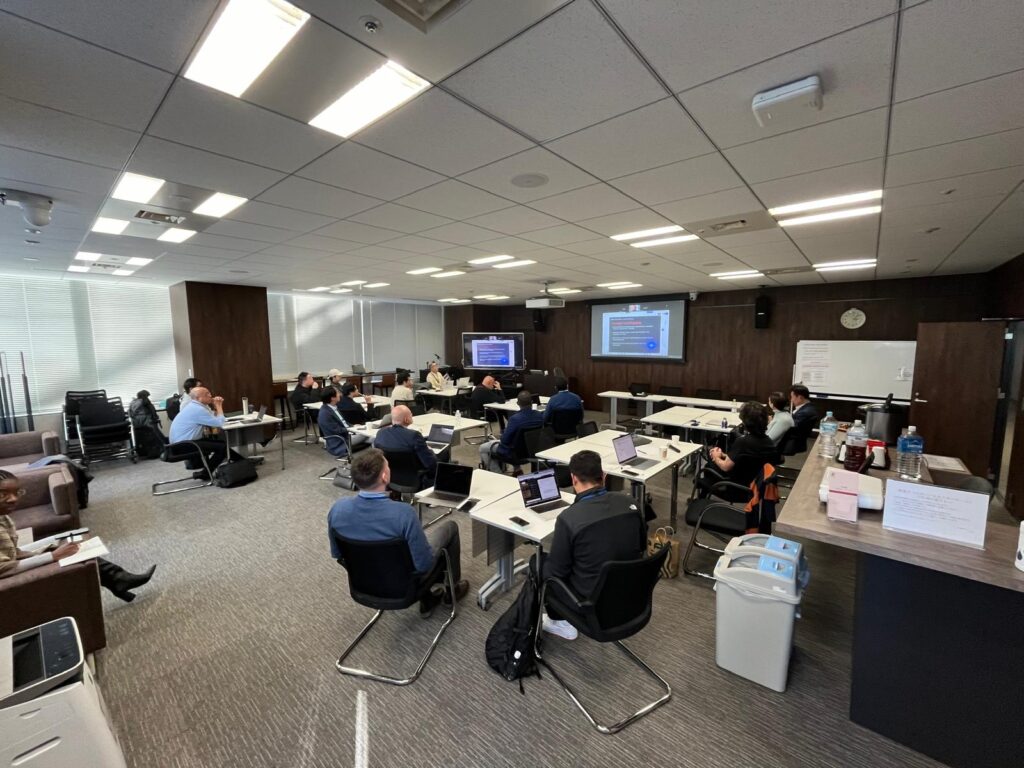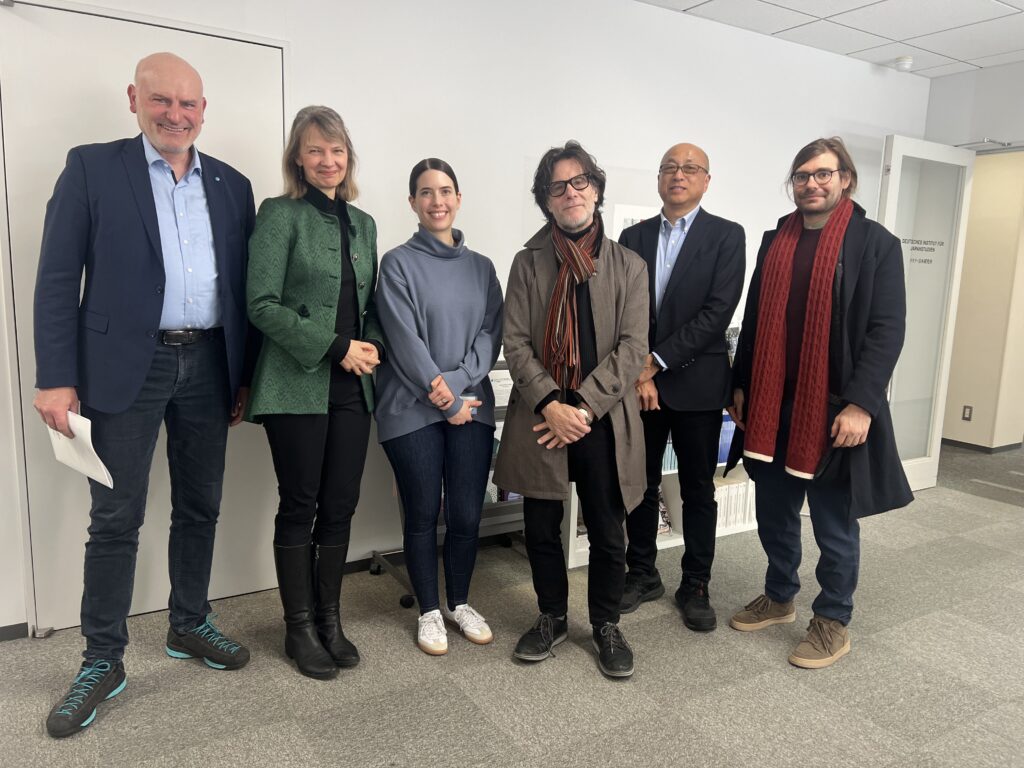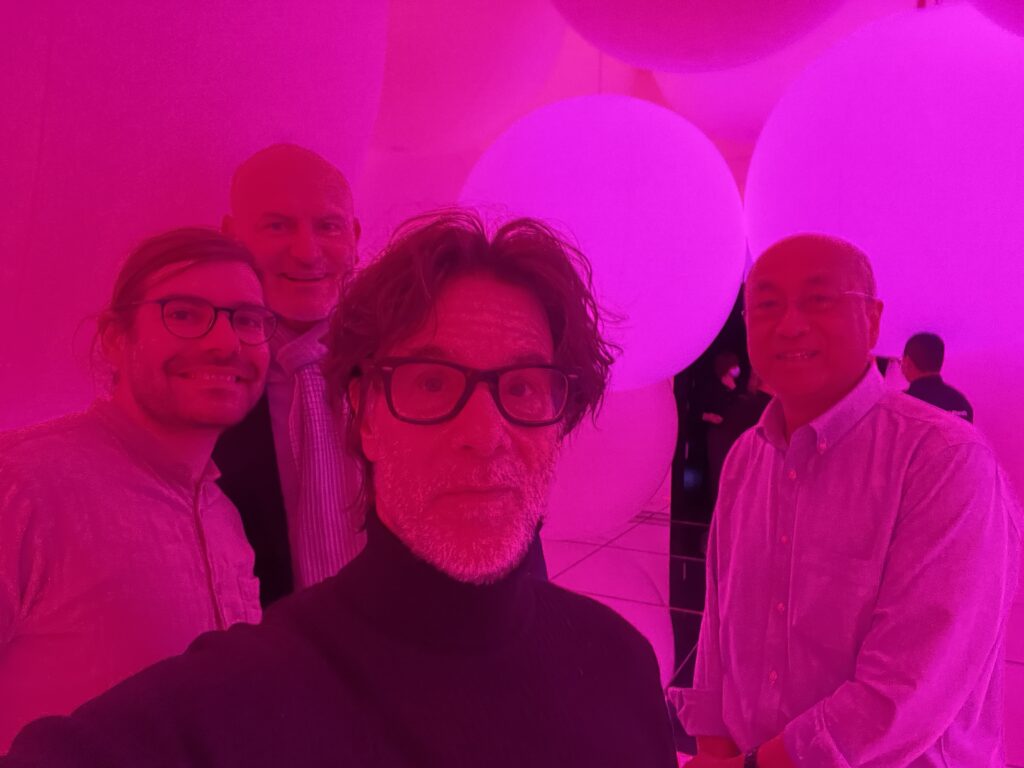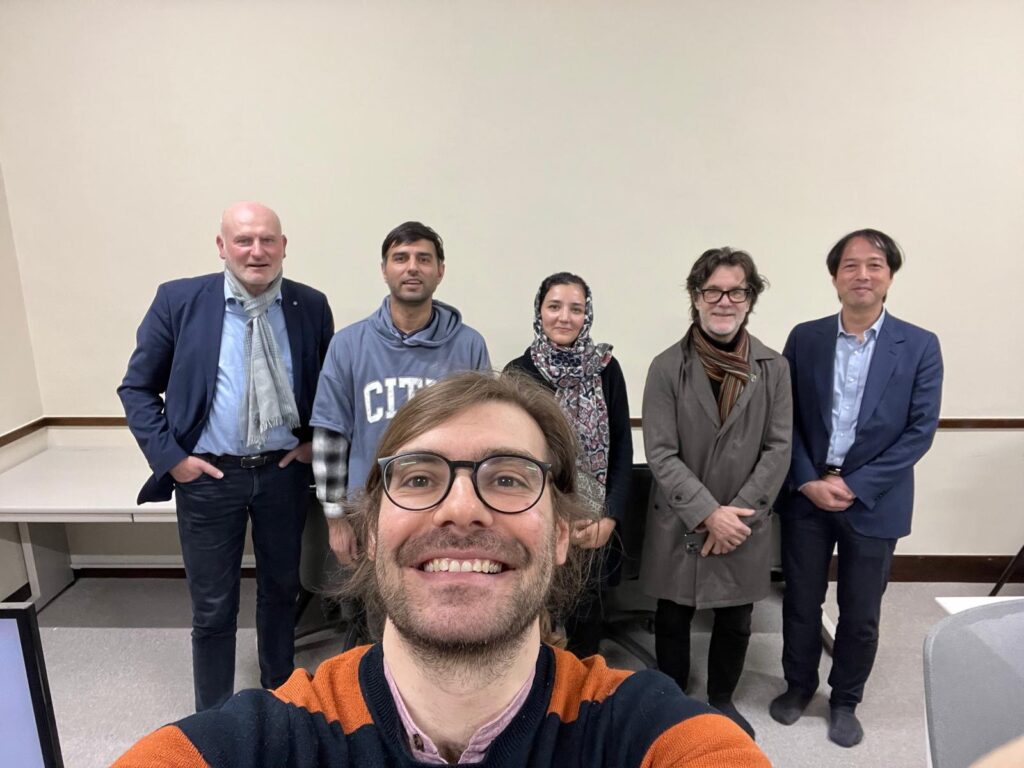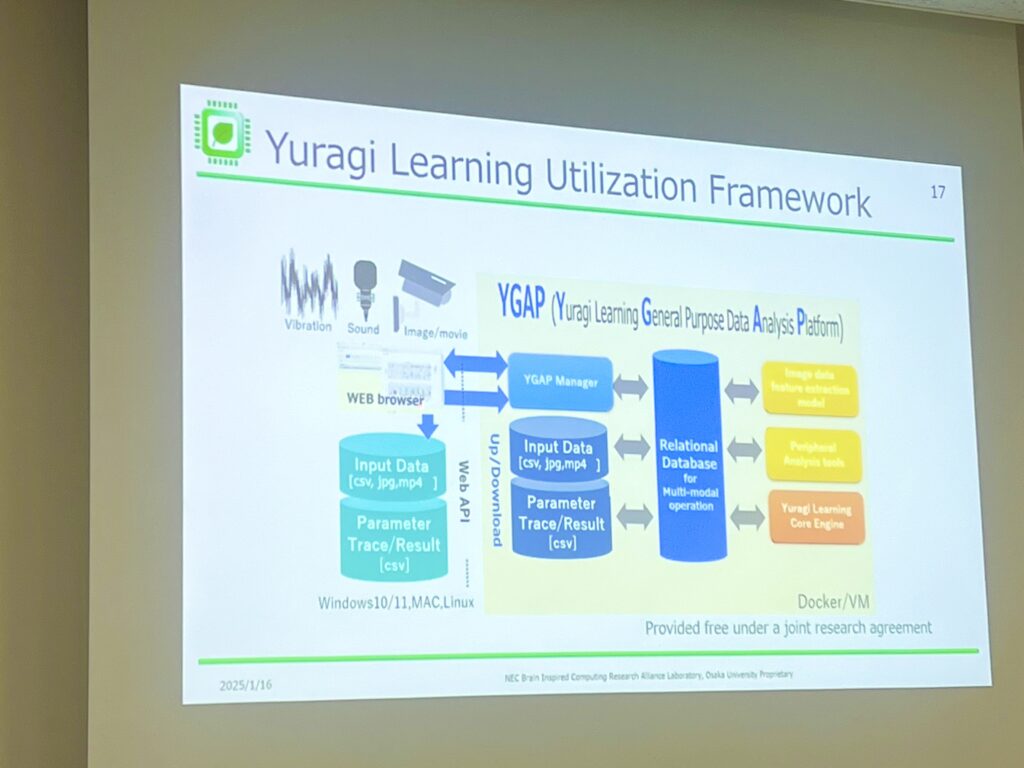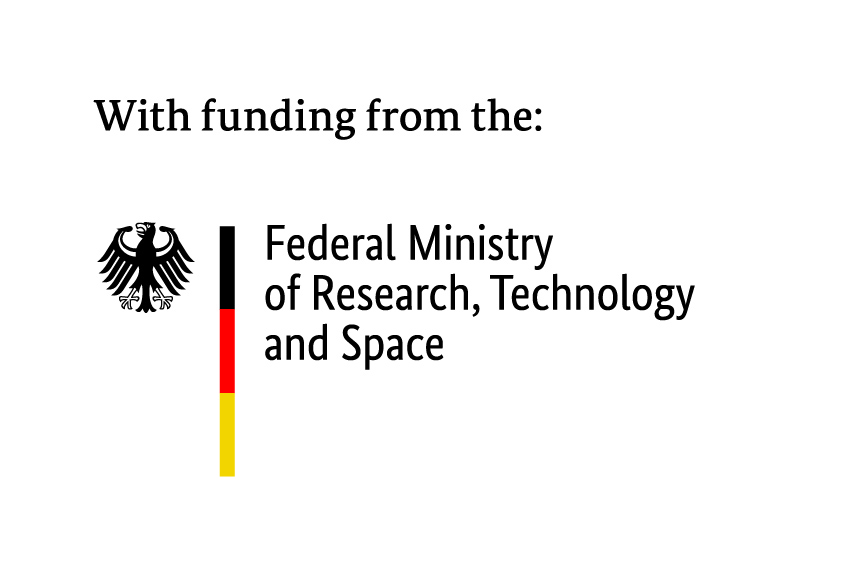Artistic Research Part 3: “The process can give depth to the final work, while the work can visualize the questions raised during the process”
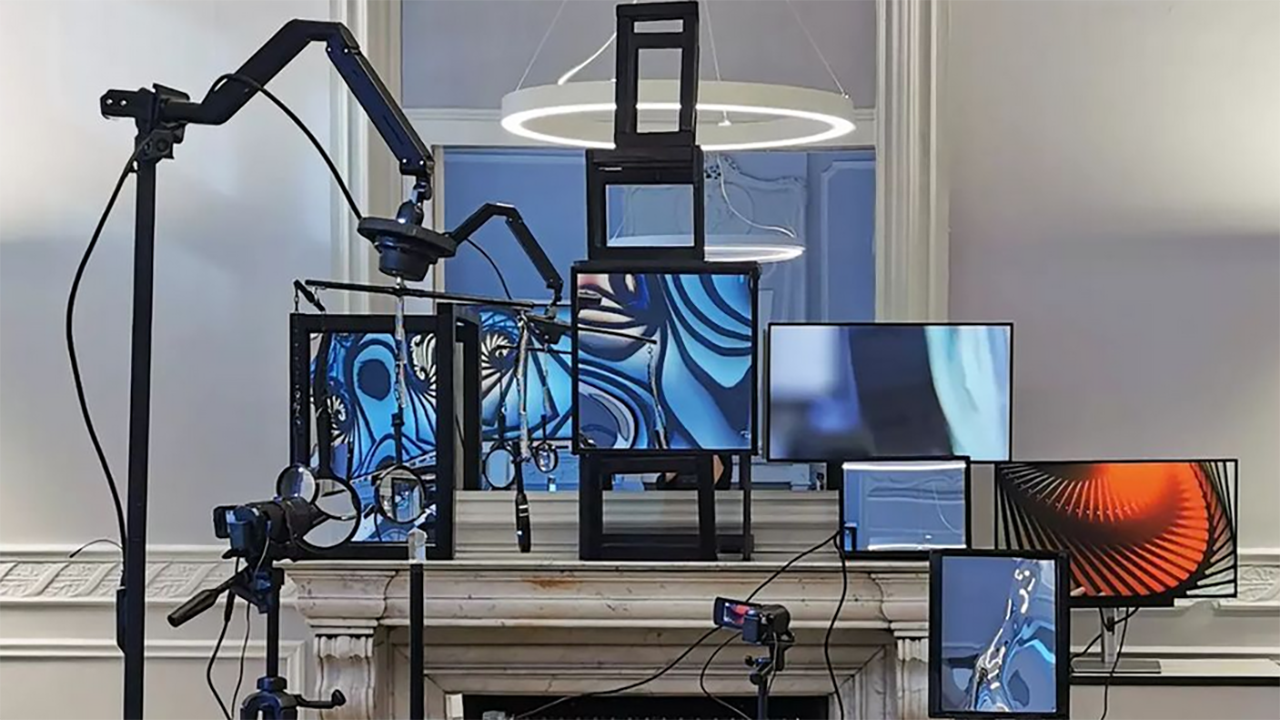
At the KHK c:o/re, the practice of artistic research has always been part of our research interests. For this reason, we invite fellows working closely with the arts in each fellow cohort. In the past four years, we have realized various projects in collaboration with art scholars and practitioners, and different cooperation partners, ranging from artistic positions in the form of performance, installation, discourse, and sound. Many of these events were part of the center’s transfer activities to make the research topics and interests visible, relatable, and tangible. In this sense, art can be seen as a translation for scientific topics. But the potential of the interaction between science and art doesn’t end there. Art is more than a tool for science communication, it is a research culture. Therefore, we ask the following questions: What kind of knowledge is generated in artistic production? How are these types of knowledge lived in artistic research? And, in combination with one of the central research fields of the center: To what extent are artistic approaches methodologies for what we understand as expanded science and technology studies?
To get closer to answering these questions, we talked to some of our fellows who are working closely with the arts and researching the connection between science and art. We want to find out about the epistemic value of artistic research, the methodologies and institutional boundaries of artistic research in an academic environment, and how they implement artistic research in their research areas.
In this edition of the interview series, we spoke to KHK c:o/re alumni fellow Masahiko Hara.

Masahiko Hara
Masahiko Hara is an engineer and Professor Emeritus of Tokyo Tech, Japan. His research interests are in the areas of Nanomaterials, Nanotechnology, Self-Assembly, Spatio-Temporal Fluctuation and Noise, Ambiguity in Natural Intelligence, Bio-Computing, Chemical Evolution, Origins of Life, and Science and Art Installation.
KHK c:o/re: What do you think is the epistemological value of artistic research?
Masahiko Hara: Artistic research expands the diversity of “knowing” by exploring sensory and embodied experiences, as well as aspects of “tacit knowledge” that are difficult to verbalize. It offers an alternative approach to phenomena that cannot be fully grasped by the theories and data-driven frameworks centered on “explicit knowledge”, which are prioritized in contemporary science and technology.
Historically, philosophy and physics (here referring to the natural sciences) were two sides of the same coin. However, as they developed separately in the 20th century, there arose a need for a new metaphysics — a kind of metaphysical translation that could bridge the gap. I believe this is where the value of artistic research lies:
- Contribution to diverse forms of knowledge
- Reframing how questions are asked
- Critically reflecting on how we know
- Emphasizing experience and relationality
What specific methodologies are used in artistic research? Can you give an example?
Certainly, I believe the science-art installation experiments we are conducting represent a cutting-edge methodology in artistic research. Other examples include performances, participatory projects, and experimental creations using bio-materials, for example.
I have conducted “scientist-in-residence” projects that explore experimental creation at the intersection of science and art — such as computation using slime mold amoebas and experiments on crowd psychology and social group dynamics. Each of these projects is still in a “prototype” phase, but I feel that this very process of trial and error itself constitutes a new methodology.
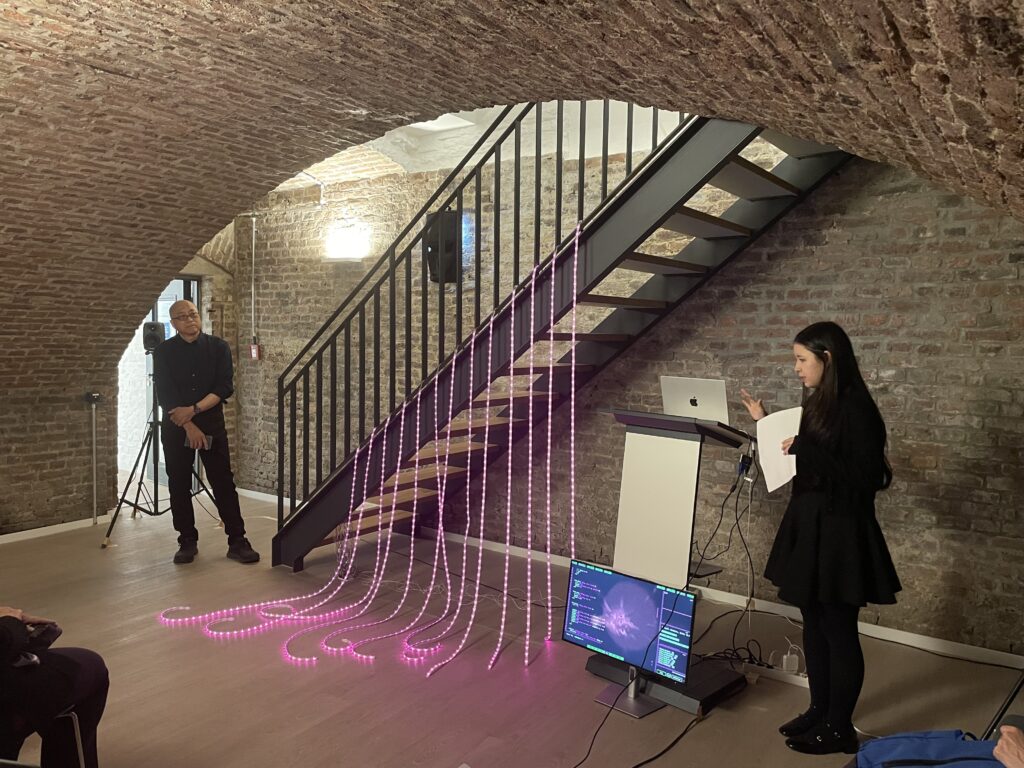
How do product-oriented art forms such as exhibitions or installations differ from process-oriented approaches to art? Is there a hierarchy? How do these approaches influence each other?
Product-oriented approaches focus on a “finished form” to be delivered to the audience, while process-oriented approaches value the creative process and trial-and-error itself (I think installations are not categorized in the product-oriented art, but rather process-oriented). There is no hierarchy between the two; rather, they are complementary. The process can give depth to the final work, while the work can visualize the questions raised during the process. Interestingly, from my viewpoint, both science and art today, established in the 20th century, have product-oriented tendencies. In both cases, it’s about delivering something complete — whether a published paper or a finished artwork — to the audience.
What is also notable is that in Asian ways of thinking, there tends to be a greater appreciation for the effort and process leading up to a goal, rather than just for “winning” at the Olympics or World Cup, for example. Unfinished processes, or those not yet reaching a goal, can themselves generate new value, especially in the form of installation experiments in both science and art. In this sense, when we talk about “mutual influence”, I believe that the idea of “incomplete completeness” in both product-oriented and process-oriented approaches could be coupled and give rise to new forms of emergence.
Is there a specific aesthetic that characterizes artistic research? Like trends or movements?
I think the aesthetics of artistic research lie in its attitudes, such as reexamining how questions are framed and embracing uncertainty. As for trends, I believe artistic research challenges the very foundation of aesthetics itself: it prompts us to ask what beauty is, whether universal beauty exists, and so on. In both science and art, within the larger environment of the universe we inhabit, the pursuit of true beauty and exploration of its methodologies is becoming increasingly relevant.
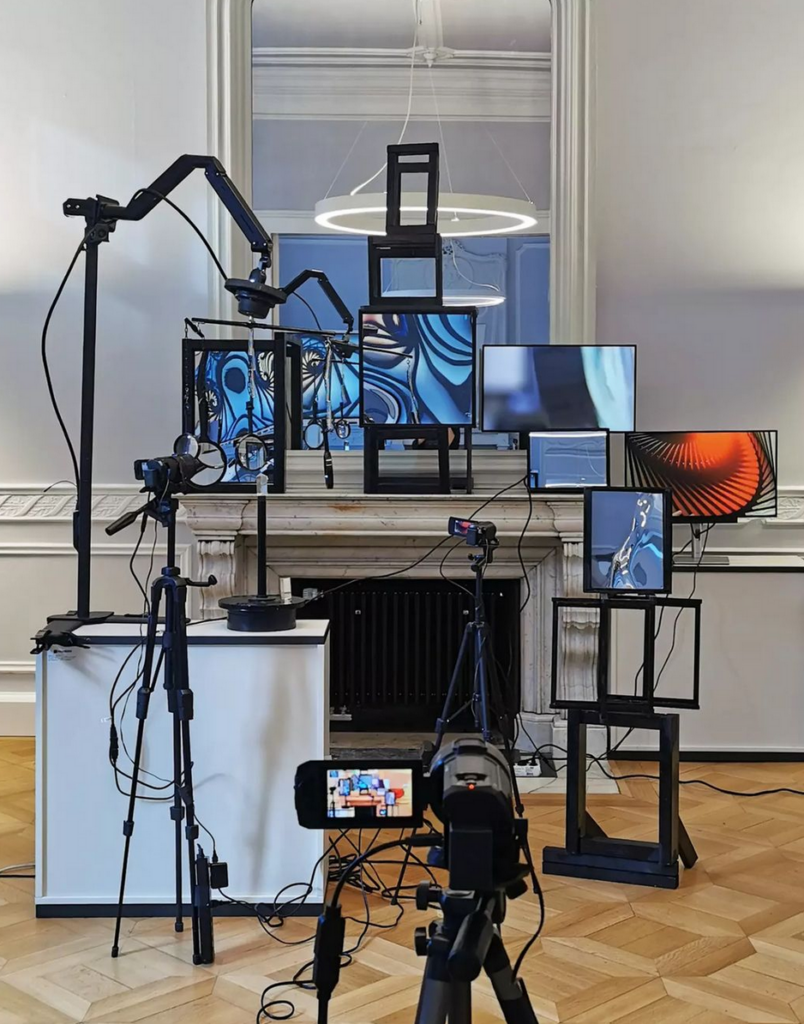
What are the problems and challenges of artistic research in an academic environment?
Some problems and challenges include the mismatch between evaluation criteria in science and art, the difficulty of “making outcomes visible,” and the gap between academic and artistic modes of expression. The open-ended, tacit nature of artistic processes often conflicts with the demand for codified, explicit knowledge in academic evaluation systems.
However, I believe that this very sense of “discrepancy” is one of the most important issues. It is precisely because this friction exists that artistic research, especially of a metaphysical nature, becomes meaningful.
What does “experimenting” mean in the case of artistic research, perhaps in contrast to the usual scientific methods?
In science, experiments emphasize reproducibility and control. In contrast, in artistic research, an experiment is an “open-ended attempt” that unfolds through unexpected discoveries, chance, and relationships with observers. Failure, deviation, and ambiguity are also essential components. Both fields involve emergence, but to exaggerate slightly, scientific experiments aim to discover phenomena and possibilities that already exist in the universe, whereas experiments in artistic research may invent phenomena and possibilities that have never existed before. They may offer answers that cannot be generated by machine learning and big data.
Do art and science have different forms of knowledge production?
Yes, unfortunately, based on the developments of the 20th century, the answer is currently yes. Science has sought universal knowledge through analysis and systematization, while art has produced individual, experiential forms of knowledge. The former values reproducibility, while the latter considers identical outcomes by different people to be banal. This again mirrors the divide between philosophy and physics. That said, while the two differ, they are fundamentally complementary forms of knowledge.
One interesting point is that artworks sometimes grasp truths that science has not yet addressed. Artists often aren’t aware they are engaging with scientifically significant perspectives. Conversely, scientists often don’t believe that artists are doing such things. Our goal, through our science-art installation experiments, is to repair and bridge this gap or missing link, reconnecting philosophy and physics into a healthy and cyclical relationship.
Artistic Research Part 2: “[A]rt and science are not distinct domains, but are intertwined practices”
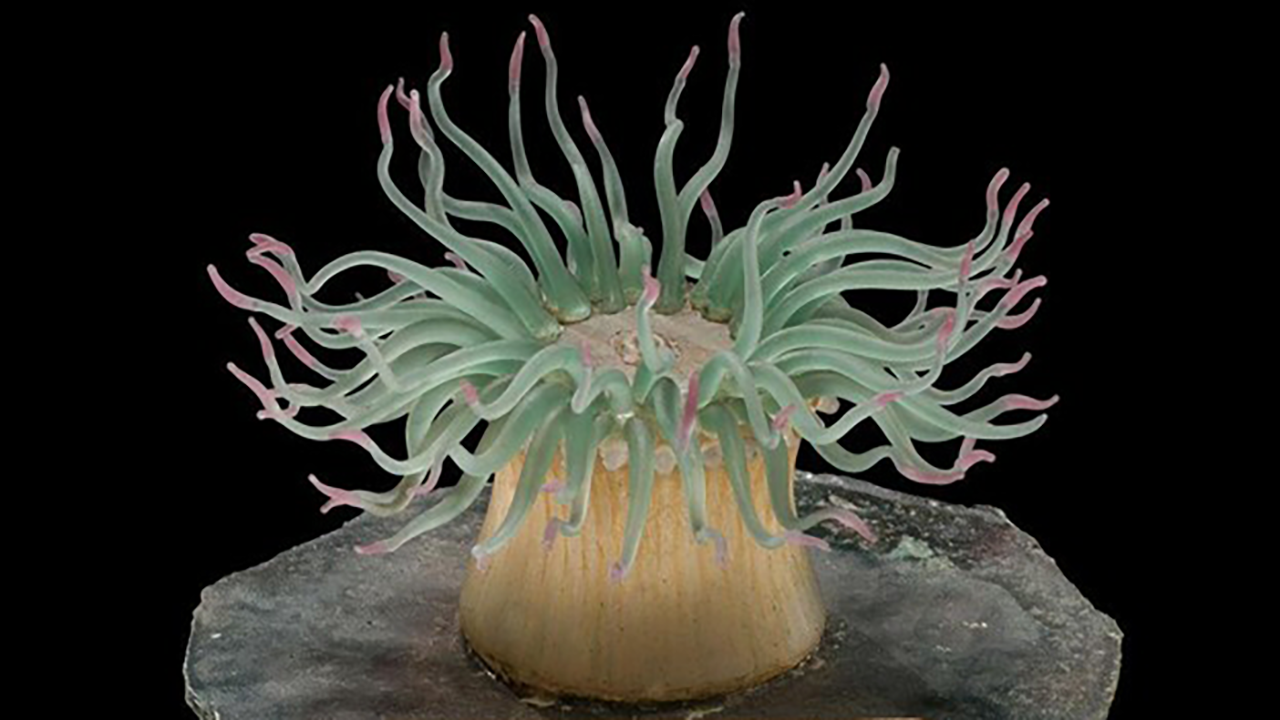
At the KHK c:o/re, the practice of artistic research has always been part of our research interests. For this reason, we invite fellows working closely with the arts in each fellow cohort. In the past four years, we have realized various projects in collaboration with art scholars and practitioners, and different cooperation partners, ranging from artistic positions in the form of performance, installation, discourse, and sound. Many of these events were part of the center’s transfer activities to make the research topics and interests visible, relatable, and tangible. In this sense, art can be seen as a translation for scientific topics. But the potential of the interaction between science and art doesn’t end there. Art is more than a tool for science communication, it is a research culture. Therefore, we ask the following questions: What kind of knowledge is generated in artistic production? How are these types of knowledge lived in artistic research? And, in combination with one of the central research fields of the center: To what extent are artistic approaches methodologies for what we understand as expanded science and technology studies?
To get closer to answering these questions, we talked to some of our fellows who are working closely with the arts and researching the connection between science and art. We want to find out about the epistemic value of artistic research, the methodologies and institutional boundaries of artistic research in an academic environment, and how they implement artistic research in their research areas.
In this edition of the interview series, we spoke to KHK c:o/re fellow Hannah Star Rogers.
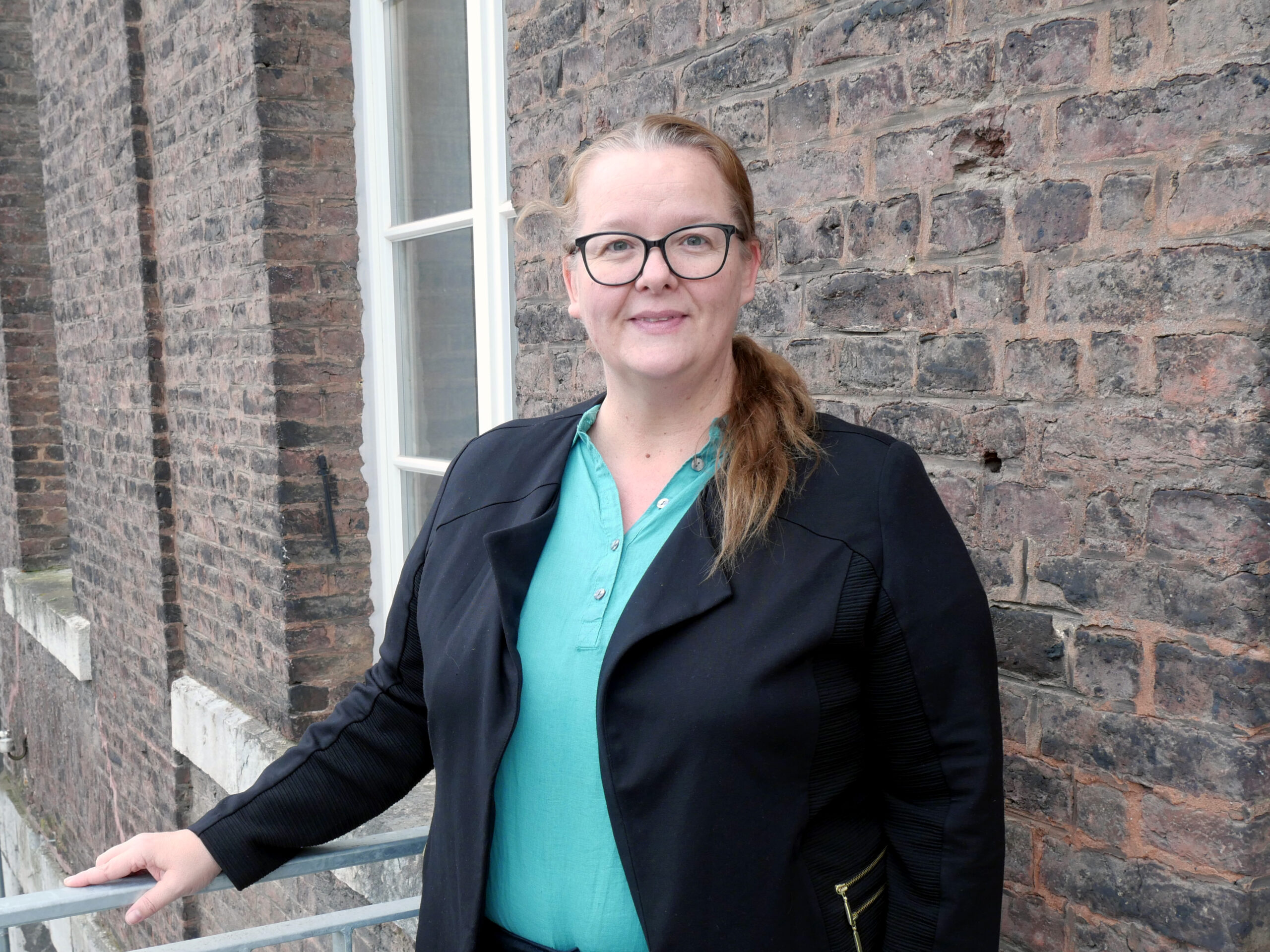
Hannah Star Rogers
Hannah Star Rogers is a scholar, curator, and theorist of art-science. She does research on the knowledge categories of art and science using interdisciplinary Art, Science, and Technology Studies (ASTS) methods.
KHK c:o/re: What do you think is the epistemological value of artistic research?
Hannah Star Rogers: Epistemology asks: What counts as knowledge? How is knowledge produced? How do we justify what we believe to be true? Who gets to decide what is valid knowledge? These are fundamental concerns of STS, and they have been the driving force behind my interest in considering the relative power of art and science, in order to understand how these groups have persisted in knowledge production. It should be said that I have in mind the large tent of STS knowledge production, which can include things like aesthetic knowledges. Artistic research holds significant epistemological value by contributing to knowledge production in ways that are often overlooked. In my book Art, Science, and the Politics of Knowledge (2022), I try to offer a perspective on the epistemological value of artistic research. Drawing from Science and Technology Studies (STS), I argue that art and science are not distinct domains but are intertwined practices that both produce knowledge through shared methodologies such as visualization, experimentation, and inquiry.
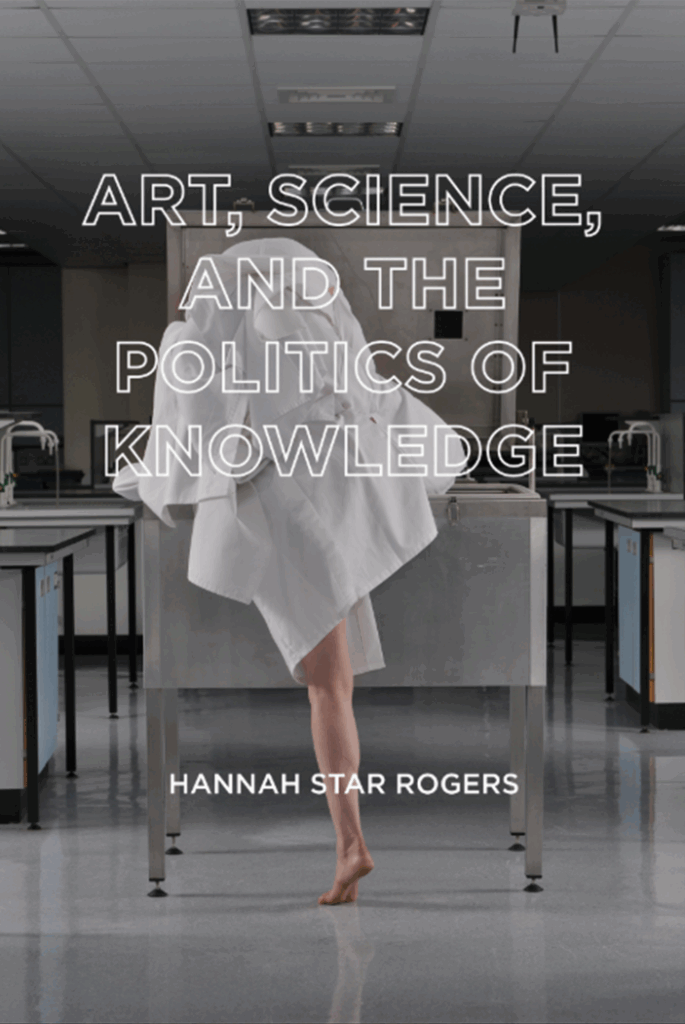
I have a particular interest in liminal objects, like the Blaschka glass marine models or Berenice Abbott’s illustrative science photographs, because they belong to both art and science networks at different times and places. Another phenomenon I’ve been interested in for what it might tell us about art and science as knowledge-making communities are intentionally hybrid art-science practices, like bioart. Their status is different but they can also help us think about STS concerns like expertise, boundary-making, and disciplinary zoning. It’s hardly news that context changes meaning, but these liminal objects are a chance to think about how people construct those meanings by invoking materials and rhetorics.
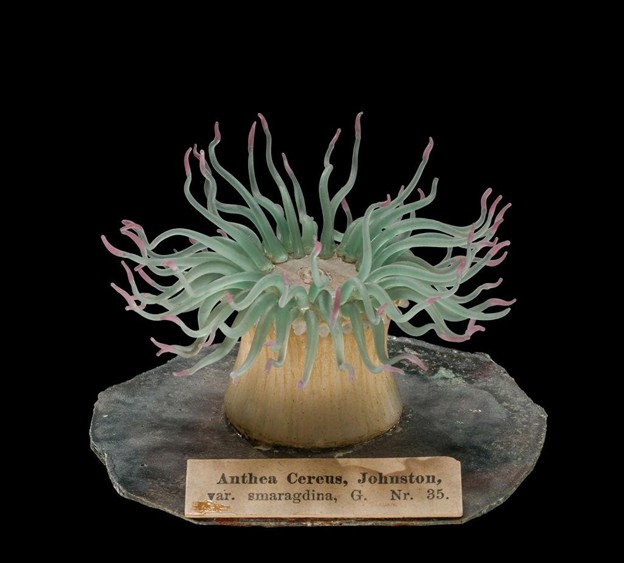
These liminal objects challenge traditional dichotomies between art and science, suggesting that these categories are socially constructed labels that order our understanding of knowledge. Building on the work of Latour and Woolgar, combined with Howard Becker, we can observe that both art and science function as networks that produce knowledge, often overlapping in their practices and outcomes. By examining the intersections of art and science and studying the works of other ASTS scholars, I observe the complex and collaborative nature of knowledge-making in art and in science. This leads me to a position of advocacy which is beyond the scope of ASTS and intersects more with my role as an art-science curator: I want to advocate for a more inclusive understanding of how an expanded understanding of what knowledge is and how it is produced, validated, and experienced.
What specific methodologies are used in artistic research? Can you give an example?
Art methods are many, but most projects involve the discovery of new processes and methods. It is easy to remark that scientists set out their methods first, but in fact, especially in the case of groundbreaking research, they often must discover the method by which to produce, reproduce, and capture data about a phenomenon. Method-making is a central part of the efforts of both artists and scientists.
Put another way, the work of artistic researchers covers many methods we are familiar with in STS, including historical and anthropological research, interviews with community members and experts, ethnographic observations, and philosophical reflections. At the same time, and I speak here about art-science, there are art processes which we tend to use less often: direct work with materials, a sensibility for offering the public an experience of the work (which often shapes choices from the beginning of artists’ processes), the duplication and hacking to standard protocols from within the sciences, and an openness to staying from our original methods. The final “product” may be an installation or performance or poetry, but often what is most revealing are the processes and decisions that shaped it. This recursive attention to method is itself a form of inquiry—and one that carries epistemological weight.
How do product-oriented art forms such as exhibitions or installations differ from process-oriented approaches to art? Is there a hierarchy? How do these approaches influence each other?
In my experience, behind the most interesting art-science projects are even more fascinating methods and processes. Showing methods and processes is a major interest of nearly all the artists (bioart, digital art, eco-arts, participatory/community arts) interviewees I have ever spoken to as part of my Art, Science, and Technology Studies (ASTS) research. It is worth noting that I particularly work with actors in art-science or art-science-technology but I believe that we would find this to be a wider pattern in other areas. A component of many contemporary artmakers’ work is to figure out how to convey their actions or the actions of others (be they communities, plants, microbes, scientists, or otherwise) through their work. Art-science curators often take up this same concern. We ask: how can we design an encounter that invites the public into the process? This can be complex, but it’s central to how we try to help audiences encounter the richness of artistic research. I’ve tried to explore some curators’ approaches to these issues in my forthcoming edited volume, What Curators Know, from Rowman & Littlefield, due out later this year. I also would argue for the need to create conditions that support open-ended artistic inquiry—akin to basic scientific research. Too often, artists are pressured to produce legible outcomes or results. But like scientists, artists should also be given space to ask difficult, speculative questions without immediate expectations of closure or utility. I have written a bit about basic artistic research (BAR) for the journal Leonardo because I believe much more needs to be done to offer artists the conditions under which they might work under the bluest skies possible, that is with open research possibilities like those that have traditionally been supported in basic scientific research.
Artistic Research Part 1: “[I]n an academic environment, […] practice-led research in the arts is still not fully recognized as eligible”
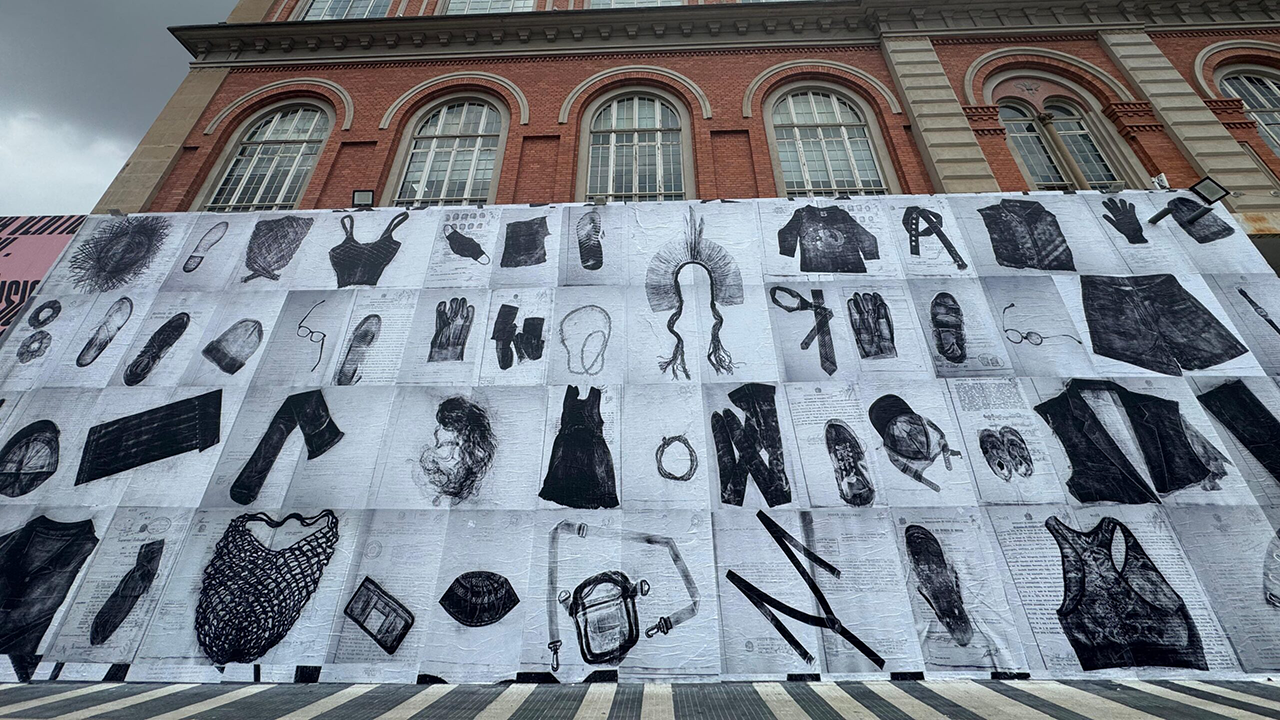
At the KHK c:o/re, the practice of artistic research has always been part of our research interests. For this reason, we invite fellows working closely with the arts in each fellow cohort. In the past four years, we have realized various projects in collaboration with art scholars and practitioners, and different cooperation partners, ranging from artistic positions in the form of performance, installation, discourse, and sound. Many of these events were part of the center’s transfer activities to make the research topics and interests visible, relatable, and tangible. In this sense, art can be seen as a translation for scientific topics. But the potential of the interaction between science and art doesn’t end there. Art is more than a tool for science communication, it is a research culture. Therefore, we ask the following questions: What kind of knowledge is generated in artistic production? How are these types of knowledge lived in artistic research? And, in combination with one of the central research fields of the center: To what extent are artistic approaches methodologies for what we understand as expanded science and technology studies?
To get closer to answering these questions, we talked to some of our fellows who are working closely with the arts and researching the connection between science and art. We want to find out about the epistemic value of artistic research, the methodologies and institutional boundaries of artistic research in an academic environment, and how they implement artistic research in their research areas.
In this first edition of the interview series, we spoke to KHK c:o/re alumni fellow Nathalia Lavigne.
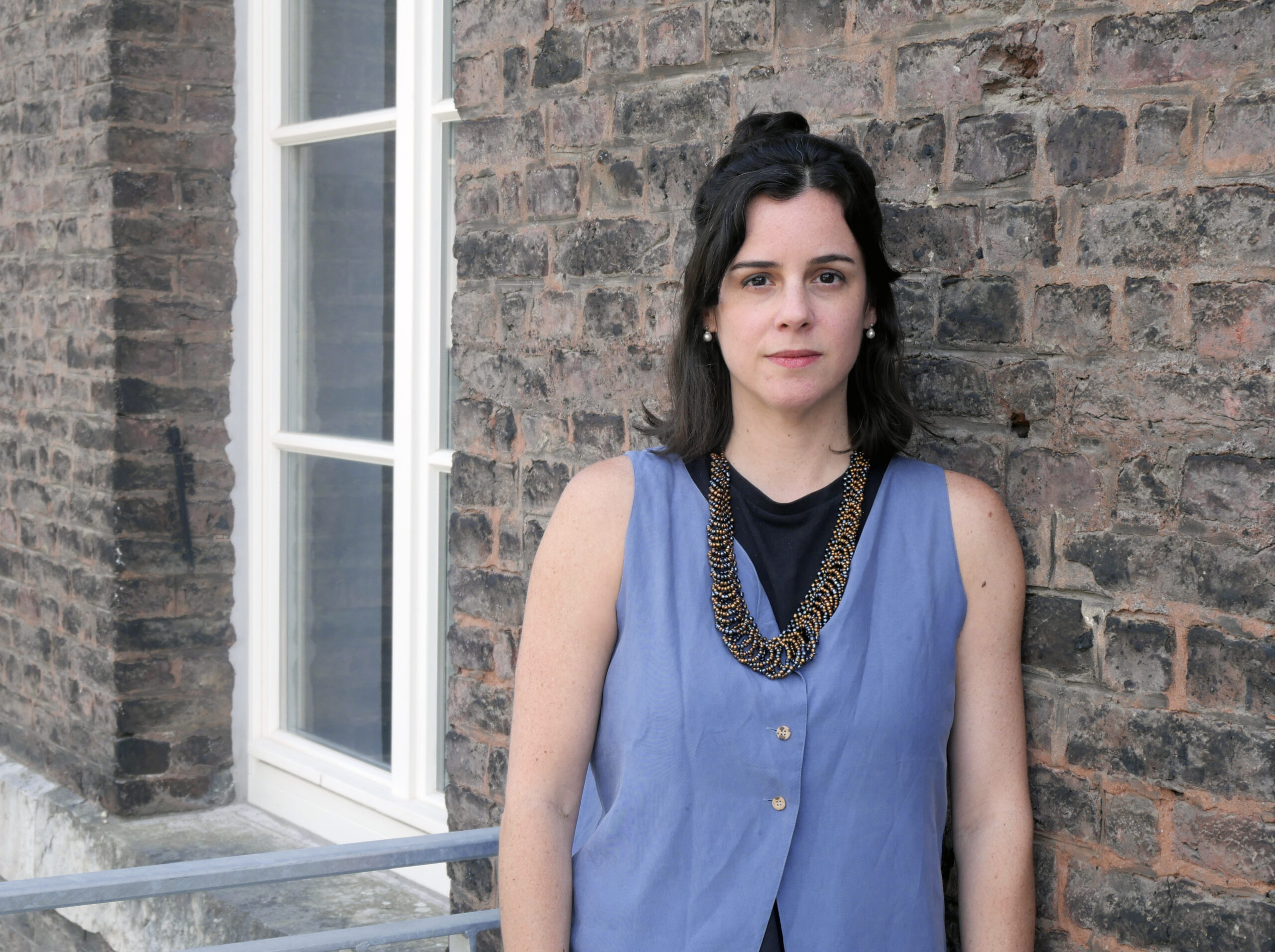
Nathalia Lavigne
Nathalia Lavigne [she/her] works as an art researcher, writer and curator. Her research interests involve topics such as social documentation and circulation of images on social networks, cultural criticism, museum and media studies and art and technology.
KHK c:o/re: What do you think is the epistemological value of artistic research?
Nathalia Lavigne: Artistic research and research-based art have become huge topics in the last two decades and some art historians have even suggested that there is an overabundance of these terms in contemporary art exhibitions in recent years. However, there are several epistemological values coming out of this approach. In general, it comes from combining knowledge from different fields, making them more visible outside of academia (in cultural spaces), and eventually contributing back to the respective field. This interconnectivity of knowledge can be valuable to academia by bringing new perspectives on objectivity and methodologies and providing more space for speculation and a more enjoyable way to absorb research.
What specific methodologies are used in artistic research? Can you give an example?
I can talk about some methodologies developed by artists I have worked with, either as a curator or when writing about their work. One example is the project (De)composite Collections, developed by Giselle Beiguelman, Bruno Moreschi, and Bernardo Fontes for the ZKM’s intelligent.museum residency in 2020. They analyzed the collections of two Brazilian museums through AI reading systems. Using these datasets, which were algorithmically processed with GANs (Generative adversarial networks), they questioned what other art histories might emerge from AI’s readings of the images and how these systems could contribute to understanding the gaze as a historical construct. Part of this methodology involved the development of a dataset organized by recurrent themes in Brazilian modernism, such as indigenous people, people of color, white people, and tropical nature. This work was also part of a project developed by students and faculty members at the University of São Paulo (USP), so it originated in an academic environment.
Is there a specific aesthetic that characterizes artistic research? Like trends or movements?
I would say that there are some characteristics that we can notice in the way these projects are formalized depending on the period. One that has been quite evident in recent years is the so-called “forensic aesthetics.” Popularized by artist and researcher Eyal Weizman, the term refers to a methodology used in art to explore the memory of places and objects as forms of testimony. This aesthetic has influenced artists working on topics such as repressed memory and collective amnesia in different contexts. One artist I have collaborated with as a curator is Rafael Pagatini, whose work addresses the memory of the Brazilian Civil-Military Dictatorship (1964-1985) in the present. In his process, he applies methodologies from both history and law, which affects how these memories are addressed (or omitted) from institutional archives.
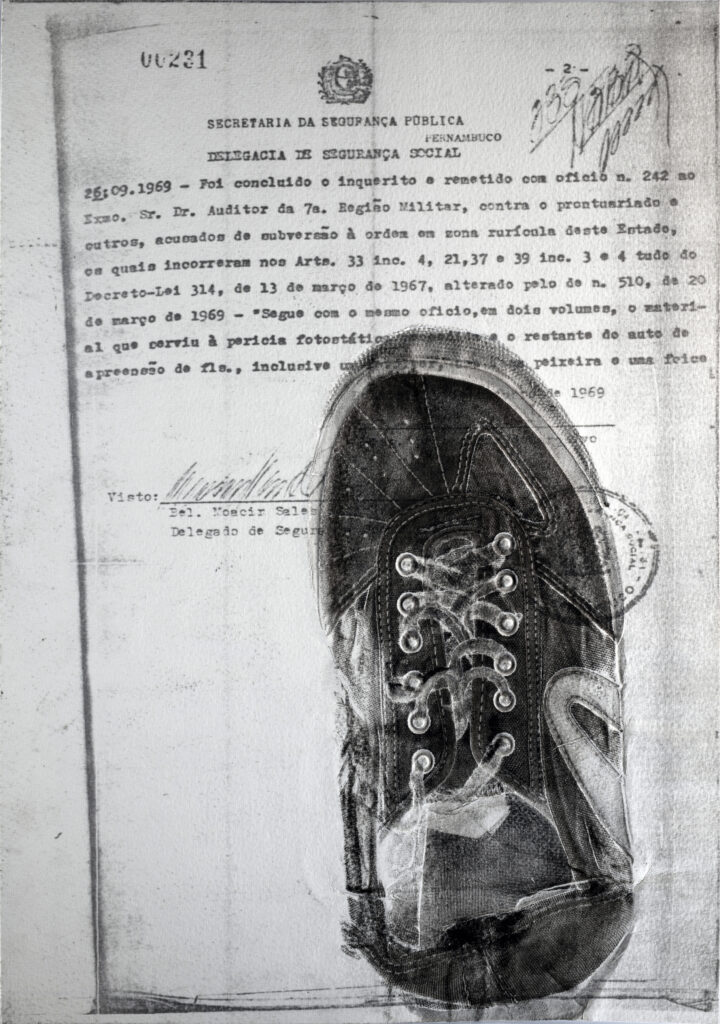
But there are also artists who have been collaborating with scientists long before this kind of artistic production was labeled “artistic research.” For example, since the 1990s, Eduardo Kac has developed projects with bioengineers, geneticists, and, more recently, astronauts and space agencies to create his space arts projects. In his case, the methodologies and the process of materialization vary greatly depending on each project.
What are the problems and challenges of artistic research in an academic environment?
In general, the challenges in an academic environment are that practice-led research in the arts is still not fully recognized as eligible for funding or career assessment procedures. But this has been changing, especially since the Vienna Declaration on Artistic Research co-written by different European associations in 2020. However, in countries from the Global South — or even in the US, where public funding for research is limited — this reality is very different. As I’ve heard from artists engaged in artistic research in Brazil, for example, the challenges are not so much in an academic environment but rather in the art system in general. As the Brazilian art system still largely revolves around the market due to the fragility of public institutions, research-based art finds it difficult to fit into a more commercial logic that prioritizes art objects that are less process-oriented.
Expanding Cultures of Research and Governance in the Innovation Era
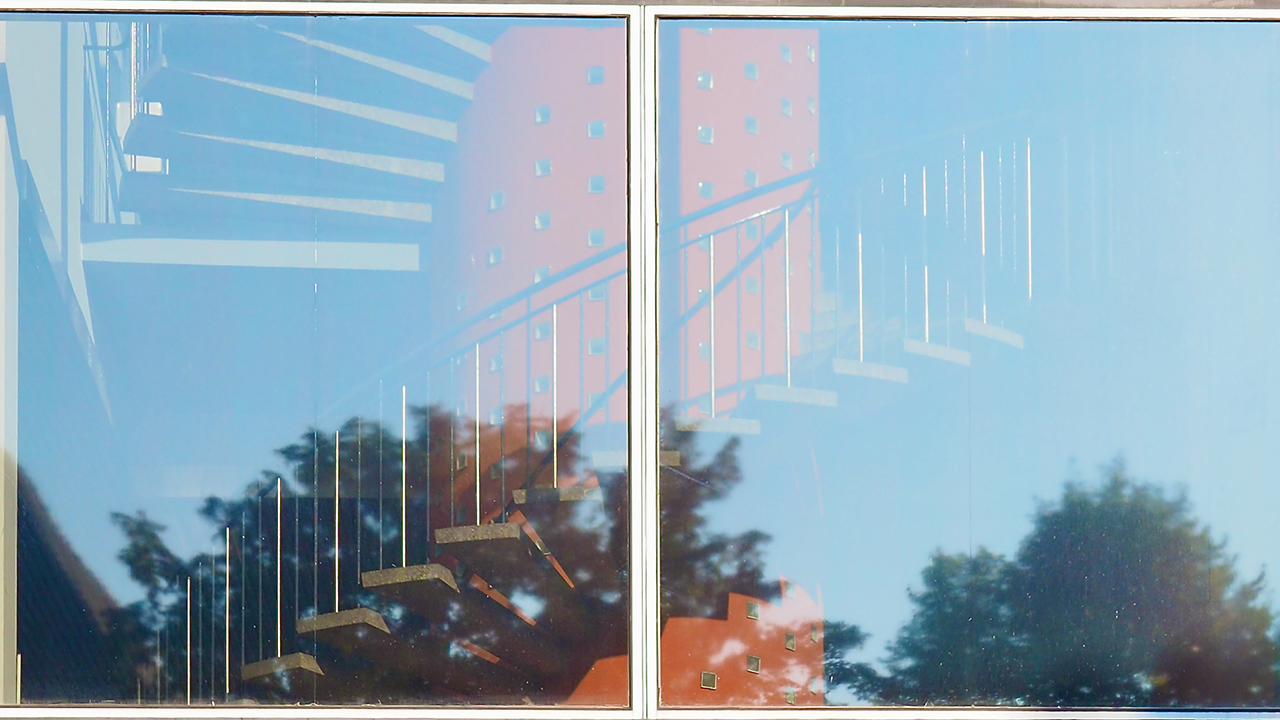
NINA FRAHM
My short-term fellowship kicked off with a KHK c:o/re workshop exploring the 2025 thematic field ‘expanded science and technology studies (STS)’. As Stefan Böschen explained at the beginning of the session, key questions guiding work in this field were how to study and make sense of increasingly hybrid forms of knowledge production in contemporary research and technological development. Expanding well beyond traditional cultures of science and engineering, research today reflects an imperative to integrate heterogeneous actors, diverse epistemic backgrounds and material practices, and a plurality of economic and political interests. On the one hand, this hybridization of research is driven by expectations for research to become more innovative – to produce new knowledge and technological tools at ever-greater speed and scale. On the other hand, it is a response to a crisis of scientific authority and narratives of technoscientific progress – producing corollary demands to democratize research through greater inclusion of society, stakeholders, and the wider public. During the workshop, we discussed different avenues through which STS can study, meaningfully engage in, and, perhaps, even contribute to critique of this trend and its dynamics. Might expanded forms of scientific and technological production also require expansion of analytical perspectives, methodological tools, types of collaboration, and vocabularies of critique in STS?
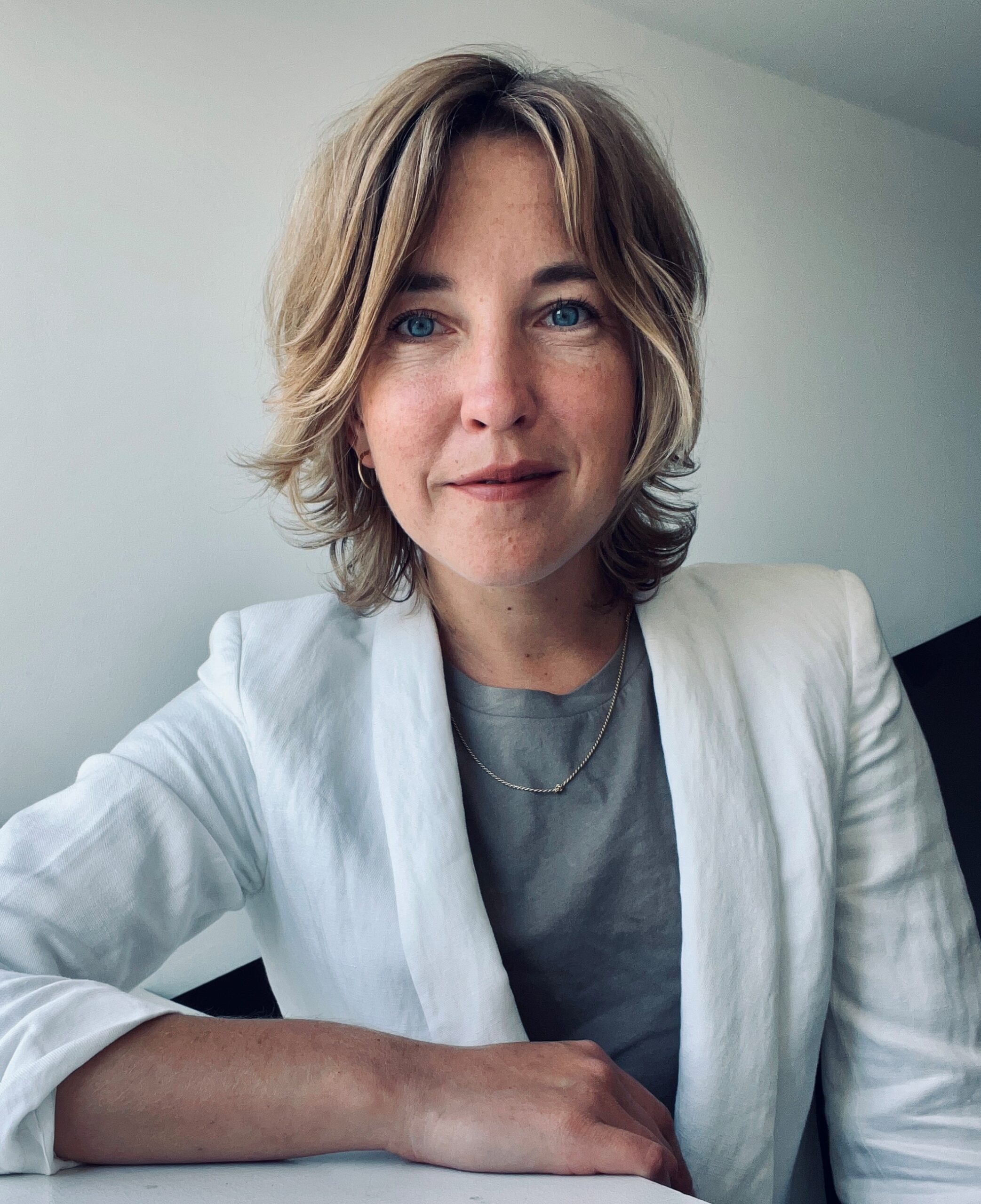
Nina Frahm
Nina Frahm is a postdoc at the Department for Digital Design and Information Studies, Aarhus University. Grounded in Science and Technology Studies (STS), she critically examines policies and governance approaches for innovation across countries, institutions, and technoscientific domains.
During my lecture at KHK c:o/re a few hours later, I argued that STS research into changing cultures of technoscience indeed should expand to studying equally important transformations in the governance of science and technology – in fact, changes in one rarely occur without changes in the other. My research over the last couple of years has closely followed recent shifts in the ways public policies frame the governance of technoscience, and in particular, which frameworks and instruments have been put into practice to achieve a greater inclusion of society in innovation processes. In the past, science and technology policy emphasized a ‘social contract with science’ and a hands-off, hidden role of the state in the production and governance of technological innovation1. Today, however, we witness governments and public institutions openly embracing innovation imperatives and policies to support the development of innovative technologies beyond science alone. Yet, promises on part of policy to achieve social progress and wellbeing through investments in innovation also face the challenge to legitimize public investments in high-risk, highly uncertain research and development. A key task for the ‘entrepreneurial state’2 is hence to produce visions of innovation as a res publica – a thing that can be produced and governed by society and according to its rules.
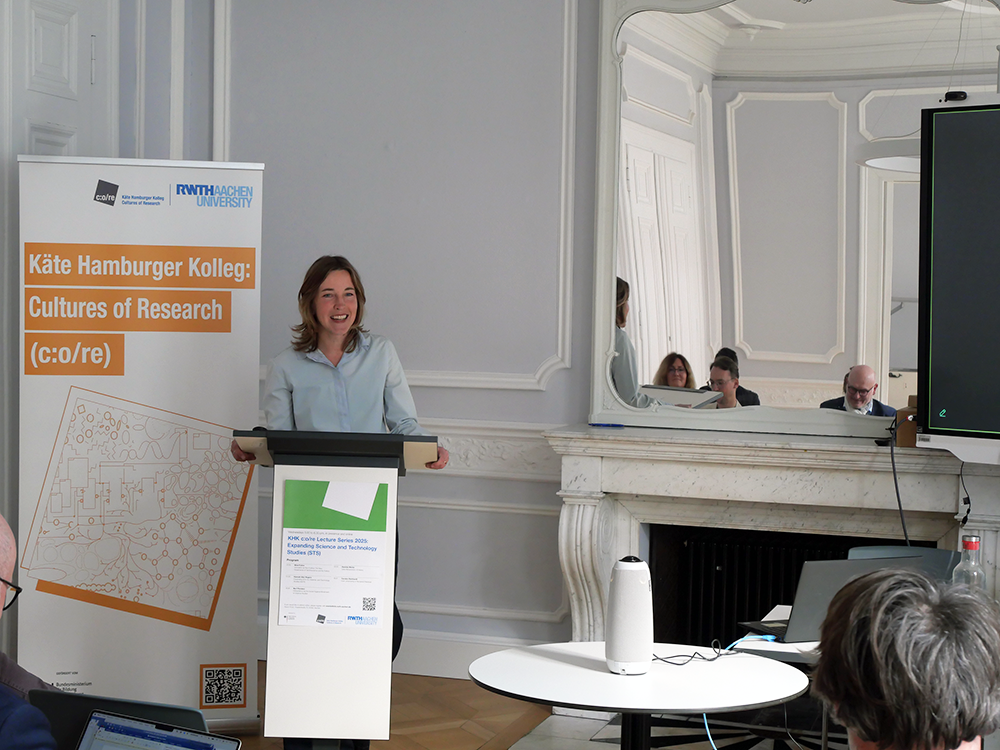
A new spirit of technoscience
The public turn to innovation in the 21st century is characterized by a ‘new spirit of technoscience’3 in which 20th century governance paradigms are turned upside down. Rather than following linear models of innovation, ‘techno-fix’ logics, and ideals for the self-governance of research and development, policies advance frames of technoscientific governance in which the public is given a key role to control innovation pathways and to fix potential problems for society upstream4. The new spirit advances a variety of frameworks to integrate the public in the development and governance of innovation, such as Bioethics, ‘Responsible Research and Innovation’, Open Science, or ‘Mission oriented Innovation’. Different tools are mobilized by policy to put such frameworks into practice, ranging from ethics committees and expert advisory boards to public engagement exercises, citizen deliberations, or co-creation processes, to name but a few.
While all these tools are geared toward ‘opening up’ technoscientific development and governance, each of them follows a particular idea of who the public is and why it should be included, how it can participate and be represented in technoscientific development and governance, through which means, and for what ends. As my research on the governance of emerging neurotechnologies5 and AI6 has shown, differences in governance frameworks and tools can be traced to culturally situated ideals of democracy that vary greatly across contexts. For instance, US approaches to innovation governance are marked by liberal-technocratic ideals of democracy as deliberations around new technologies are often delegated to experts from science, the law, or philosophy. Here, responsibility for good governance of innovation pathways is located within the individual researcher, engineer, and end-user. The EU, in turn, has experimented with more direct and deliberative forms of democracy in which the public participates directly in settling norms and principles and in which governance responsibility is collectivized along the entire innovation process, including public institutions, scientists, actors in R&D, entrepreneurs, as well as citizens. Whereas both approaches follow long-held scripts, or fictions7, of democratic procedures and practices, they also considerably re-order the relationship between publics and technoscience, particularly when it comes to the distribution of authority to reason on emerging technologies and to take decisions for their governance.
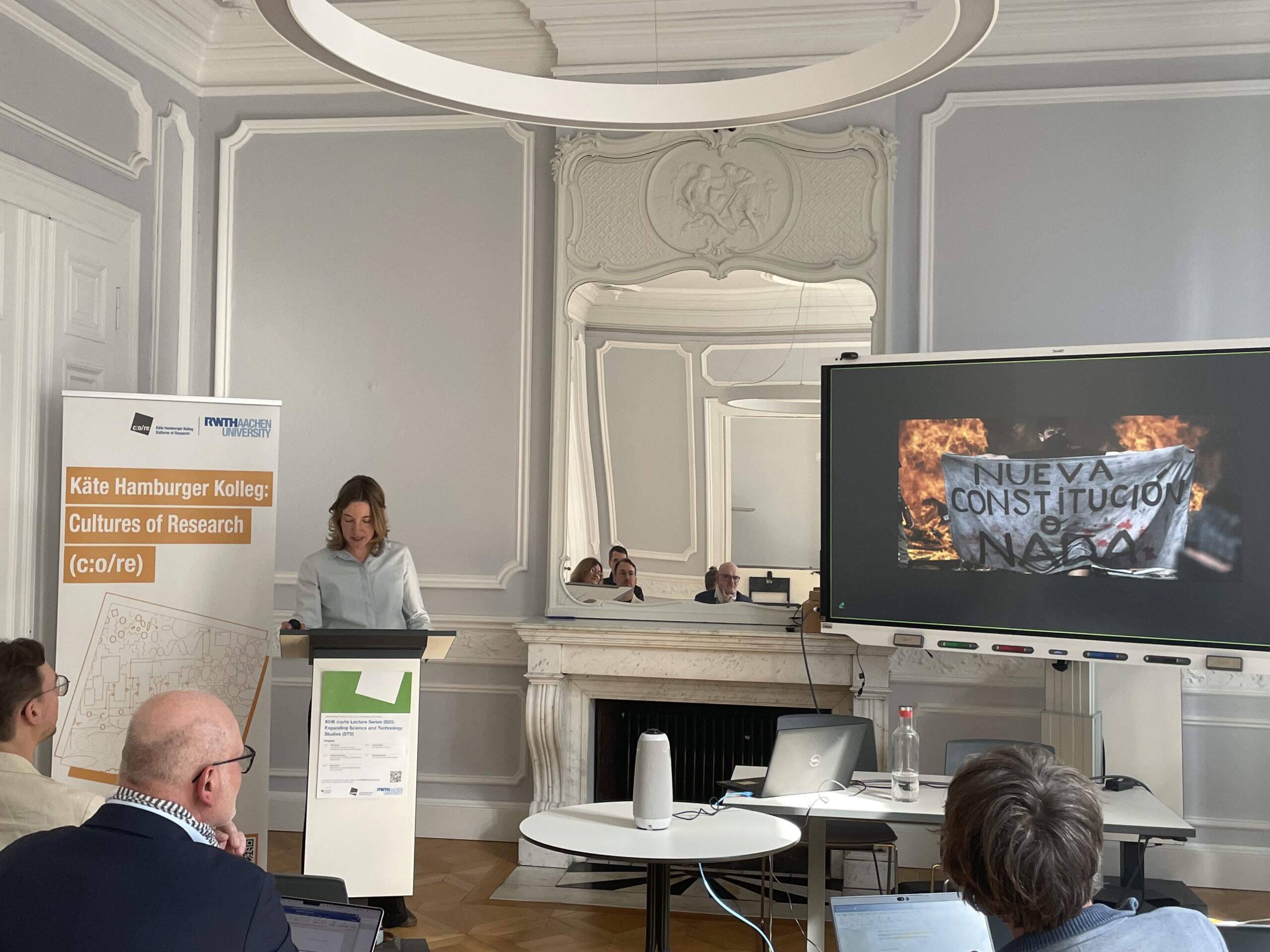
Repertoires for expansion
Expansions in the role of the state and public institutions in the production of innovation are, hence, closely related to expanding the governance of technoscience to new types of publics, forms of expertise, and practices rooted in situated imaginaries of democratic sovereignty and self-rule. To study this dynamic relationship between changing forms of technoscientific production and governance, STS offers the rich analytical language of ‘interactional co-production’ which has been tried and tested in numerous case-studies that illustrate the complexity and diversity of accommodations between science, technology, and society8. This analytical approach allows us to symmetrically trace how changes in the ways knowledge is produced and technology developed – in changing epistemic and material order – simultaneously reflect changes in democratic order regarding the power to reason on and govern science and technology in the name of society.
Such analysis encourages us to direct our critical eye beyond the discourses and practices of scientists and engineers to those places and settings which tend to be overlooked in public debates and appraisal of innovation, such as ethics advisory bodies or citizen panels. Next to interrogating their role in the co-production of socio-technical imaginaries, STS can expand analysis to conceptualizing their importance in re-producing imaginaries of democracy and in re-configuring them for the innovation era. As Jan-Peter Voß has argued, “a lot of more work is required to create robust links between empirical studies of how public engagement is conceptualized and done in various ways and the basic presuppositions and tenets of political theories describing specific ways of how ‘society’ or ‘the people’ as a whole become articulated and how the public speaks.”9 In a time where diagnoses of a ‘crisis of democracy’ are permeating the headlines and a shared sense of democratic values seems to be waning, such work is ever more important. But it can also feel uncomfortable as it contributes to further pluralizing, rather than stabilizing, taken for granted understandings of democracy and democratic practice. Doing this work requires institutional spaces that are open for expansion – spaces like KHK c:o/re where interdisciplinarity, curiosity, and intellectual courage are cultivated and cherished. In the workshop, during my lecture, and in different encounters with fellows, I have experienced how ‘expanded STS’ is not just a scholarly ambition but a mode of doing research and of thinking together that is already very much alive. And although every expansion has a limit, I look forward to further stretching it with colleagues at KHK c:o/re and beyond.
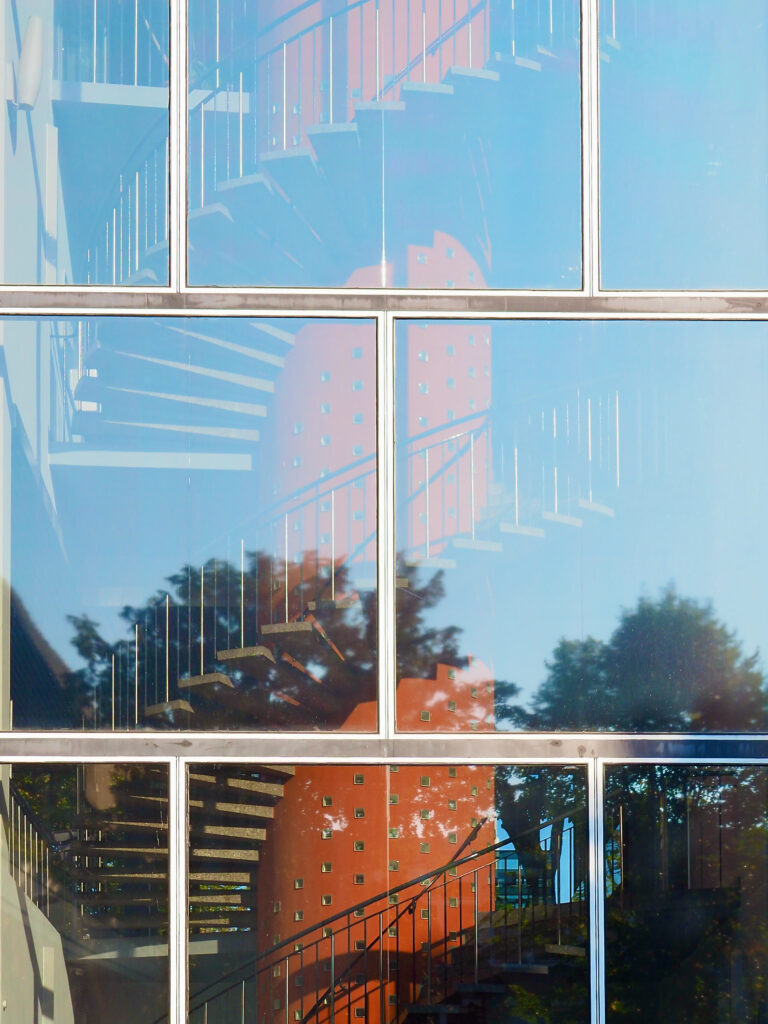
References
1 Pfotenhauer, S. M., and Juhl, J. (2017). Innovation and the Political State: Beyond the Myth of Technologies and Markets. In Critical Studies of Innovation: Alternative Approaches to the Pro-Innovation Bias, edited by Benoît Godin and Dominique Vinck, 68–94. Cheltenham, England: Edward Elgar. 68–94. https://doi.org/10.4337/9781785367229.00012 .; Block, F. (2008). Swimming Against the Current: The Rise of a Hidden Developmental State in the United States. Politics & Society, 36(2), 169-206. https://doi.org/10.1177/003232920831873
.
2 Mazzucato, M. (2018). The entrepreneurial state. Penguin Books.
3 Doezema, T. and Frahm, N. (2023). The New Spirit of Technoscience: Reformulating STS Critique and Engagement. Journal of Responsible Innovation, Vol. 10(1). doi: 10.1080/23299460.2023.2281112
4 Frahm, N., Doezema, T., & Pfotenhauer, S. (2021). Fixing Technology with Society: The Coproduction of Democratic Deficits and Responsible Innovation at the OECD and the European Commission. Science, Technology, & Human Values, 47(1), 174-216. https://doi.org/10.1177/0162243921999100.
5 Frahm, N. (2022) Soft Constitutions: Co-producing Neuro-Innovation and Society in the US, EU, and OECD. PhD Dissertation, Technical University Munich.
6 Frahm, N. and Schiœlin, K. (2023) Toward an ‘Ever Closer Union’: The Making of AI-Ethics in the EU. STS Encounters, Vol. 15(2).
7 Ezrahi, Y. (2012) Imagined Democracies: Necessary Political Fictions. Cambridge: Cambridge University Press.
8 Jasanoff, S. (2005) Designs on Nature: Science and Democracy in Europe and the United States. Princeton & Oxford: Princeton Unviersity Press; Laurent, B. (2022) European objects: the troubled dreams of harmonization. Cambridge, MA: The MIT Press; Parthasarathy, S. (2017). Patent Politics: Life Forms, Markets, and the Public Interest in the United States and Europe. Chicago: University of Chicago Press. https://doi.org/10.7208/9780226437996.
9 Voß, Jan-Peter (2019) Re-making the modern constitution: The case for an observatory on public engagement practices. In: Simon, D., Kuhlmann, S., Stamm, I., Canzler, W. (eds.) (2019): Handbook of Science and Public Policy. Cheltenham: Edward Elgar.
Quo vadis, Cultures of Research?

ALIN OLTEANU AND THE C:O/RE TEAM
The Käte Hamburger Kolleg: Cultures of Research (c:o/re) celebrated itself, as it completed the first 4-year cycle of funding and is now successfully entering a second funding cycle. The center is funded by the German Federal Ministry of Education and Research (BMBF) within its framework program for the humanities and social sciences “Shaping the Future”. On March 25-27, 2025, we were delighted to get together for a conference targeted on the specific but encompassing theme of this center, namely Cultures of Research, which, we dare say, has recently become a more prominent academic topic due to the center’s efforts.
Who are we? All of us – c:o/re team members and fellows, both current and alumni, with a scientific advisory board that has steered the center’s activities. Almost all c:o/re fellows, who have carried out research here over four years, were present. This enabled a fascinating, for us, intersectional and inter-paradigmatic academic dialogue, the kind that makes the object of Cultures of Research. Chaired by the c:o/re team, fellows and scientific advisory board members have presented their research in approximately 40 talks. It was a most enjoyable opportunity for us to discuss, in hindsight, what emerged from four years of sustained academic work, having started from scratch, and how we see the center evolving in the future.
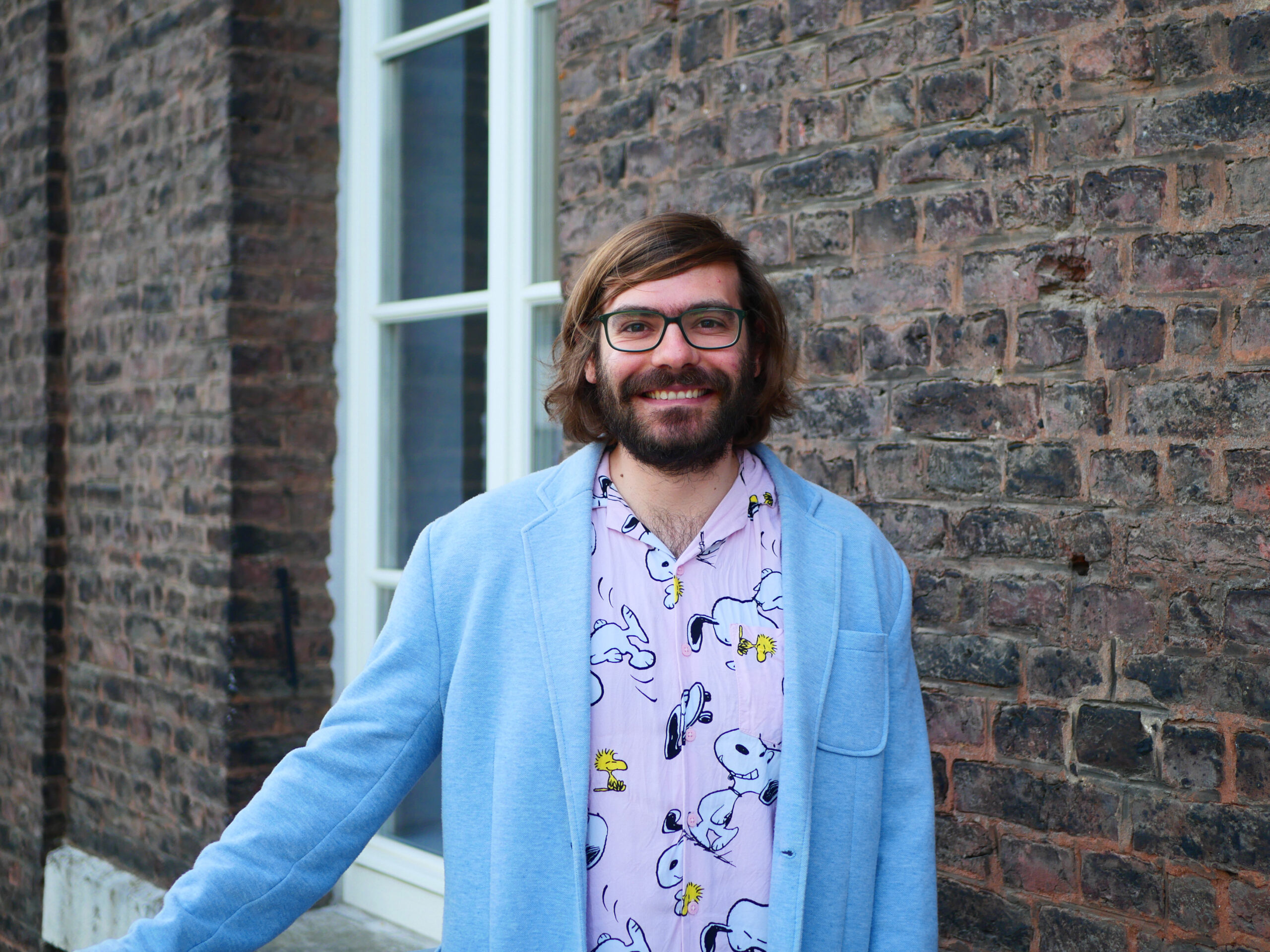
Alin Olteanu
Alin Olteanu is an Associate Professor of Semiotics at Shanghai International Studies University. Until July 2024, he worked as a a postdoctoral researcher and publications coordinator at the KHK c:o/re.
Many of us, team members and alumni fellows, deem the conference not just useful, but necessary. c:o/re has become an important dimension in the work of several of us, intellectually and institutionally. As such, gathering altogether is as important as the regular meeting of many themed academic associations. c:o/re has opened new career opportunities and perspectives for several of us. The center was formative and instrumental in the professional development of many, not just fostering the next step on a linear trajectory, such as from postdoc to tenure, but also enabling shifts in research focus, such as from engineering to science and technology studies. A small minority of alumni fellows has even found long-term academic placement at RWTH Aachen University. Even for such colleagues, who never fully left the center, the conference was needed, to reconnect with others. Many remark that it was particularly interesting to have the chance to dialog with the scientific advisory board in a collective, transparent and friendly setting.



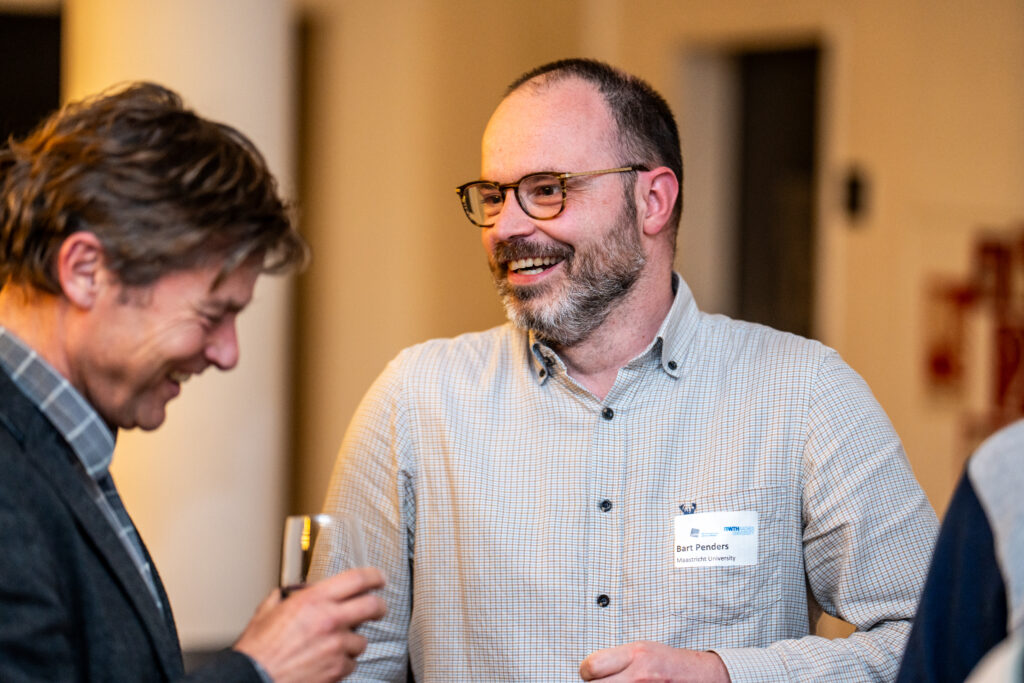
c:o/re directors Professors Gabriele Gramelsberger and Stefan Böschen started off the conference, welcoming what was a heterogenous but familiar gathering. They shared their views on the first four years of this center, the main research topics that channel its work and how these evolved. This ushered in the first keynote, “Historicizing Epistemology” by Hans-Jörg Rheinberger, a fitting way to start off a Cultures of Research conference, setting the optics for further conversation.

The conference was structured thematically in eight panels under three main c:o/re study foci, as follows. To address the theme of Change of research practices, we organized the panels Dealing with Complexity and Digitalization of Science. The theme Organizational transformations in science was addressed through panels on Lifelikeness, “Expanded STS” & Euregio, Freedom of Research, Art and Research. The Historical and intercultural comparison of varieties of science was organized into the panels Historicizing Science and Varieties of Science. This thematic organization results from a dialectics that is both top-down and bottom-up, to follow the research center’s rationale and mission, which have been channeled, in time, through the research it produced, one step at a time.

Being part of the c:o/re team, we feel privileged to be in a position to listen to the various studies that have emerged from this research center, observing how they have shaped the center and how its entailed research topics have changed over time. To illustrate, for someone who has been a part of this four-year effort throughout, it was fascinating to listen to dialogues among the scientific advisory board with and across four generations of fellows, who seldomly knew each other. This was not just a meeting of individual scholars, but of academic groups that have crystallized during their respective fellowships, having each developed their research subculture. In this exercise, we saw first-hand the importance of institutional academic funding structured in this Käte Hamburger Kolleg format. Until now, we have worked with these scholars individually and in well-focused formats, such as thematically organized fellow cohorts.
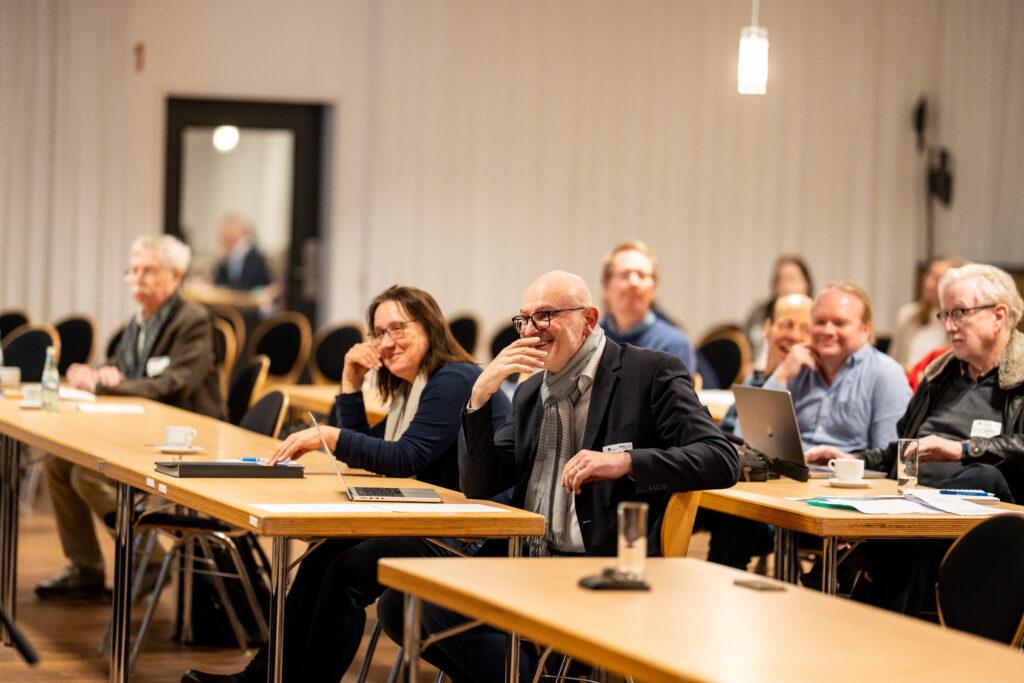
Our festive conference opened the doors to intersectional dialogue, releasing the, however interdisciplinary, strictly focused work of individuals and clusters within c:o/re into a productive and creative chaos. As some fellows attest, while at first glimpse the range of topics brought together under the roof of the center, as seen in this conference, may seem unrelated, they epistemologically connect very well. It is such facilitating of interdisciplinary research that positioned some fellows to discover that the issues they tackle are of interest beyond the disciplinary confines within which they each operate.
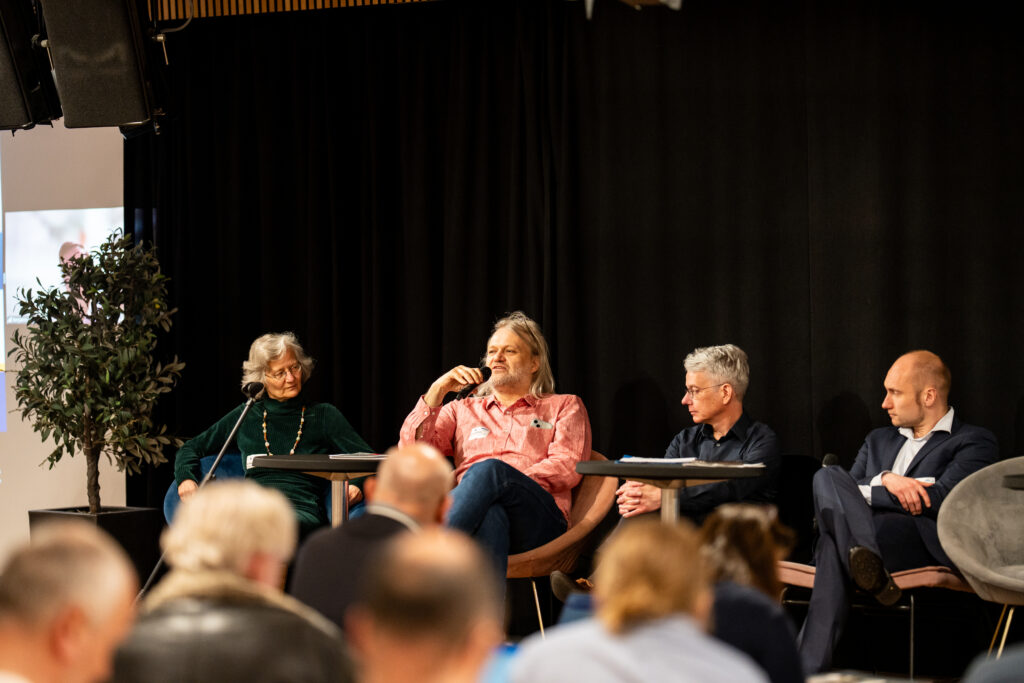
We see c:o/re having enabled new and unexpected quo vadis reflections on Cultures of Research, something we can observe regarding the topic of “Expanded STS”, a c:o/re coinage that is drawing growing attention, as an anticipating consideration on scientific and technological futures. Actually, we contend that the conference panel dedicated to Expanded STS demonstrated how much STS is shaped by ‘othering’ and internal demarcation between disciplines (especially the sociology and philosophy of science). However, at the same time, our conversations reveal not only that a multitude of approaches co-exist, dealing with these boundaries differently and more productively, but also that a growing scholarly community is willing to explore new interdisciplinary avenues for cooperation.
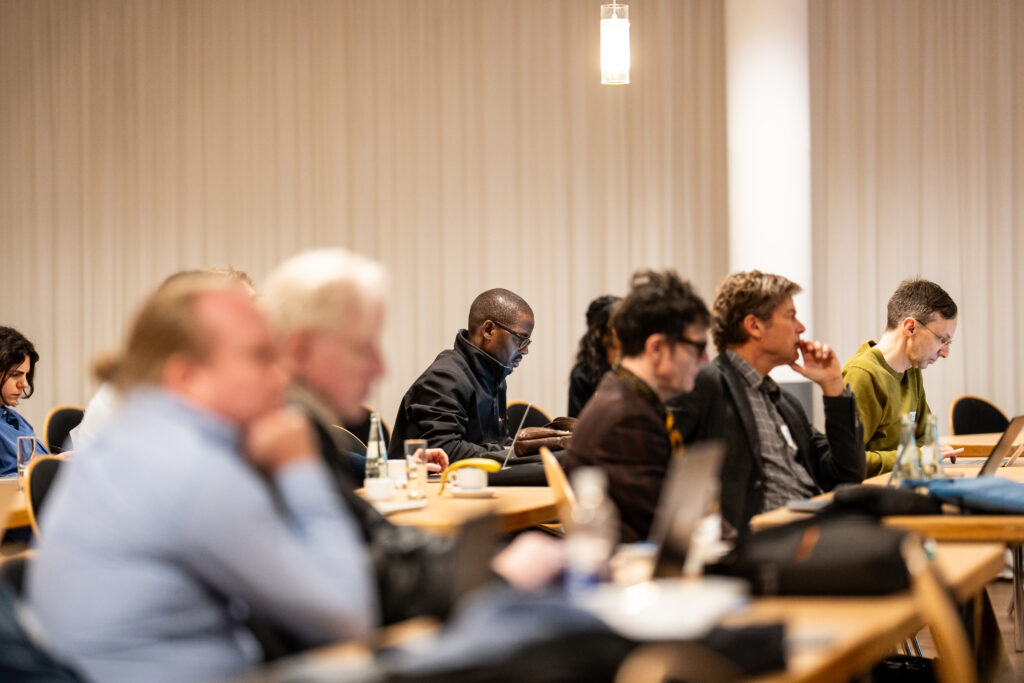
We do not want to give the wrong impression that the research carried out at c:o/re is free of contradicting or even controversies – far from it. The conference has seen plenty of contradictory arguments and contestations among the speakers, in a way that accounts for two important matters for any research institute, namely that (1) this center is a platform for free academic debate and that (2) the approaches it hosts are epistemically compatible (that two positions on a topic are contradictory implies that they are mutually relevant). Actually, the one claim on which we found total agreement is that Freedom of Research is currently one of the most important issues for the academe, as well as society broadly. All fellows, team and scientific advisory board members see the urgent need of freely (!) discussing the freedom of scholars in the current context when sociotechnical shifts have consequences for the freedom of speech and expression.
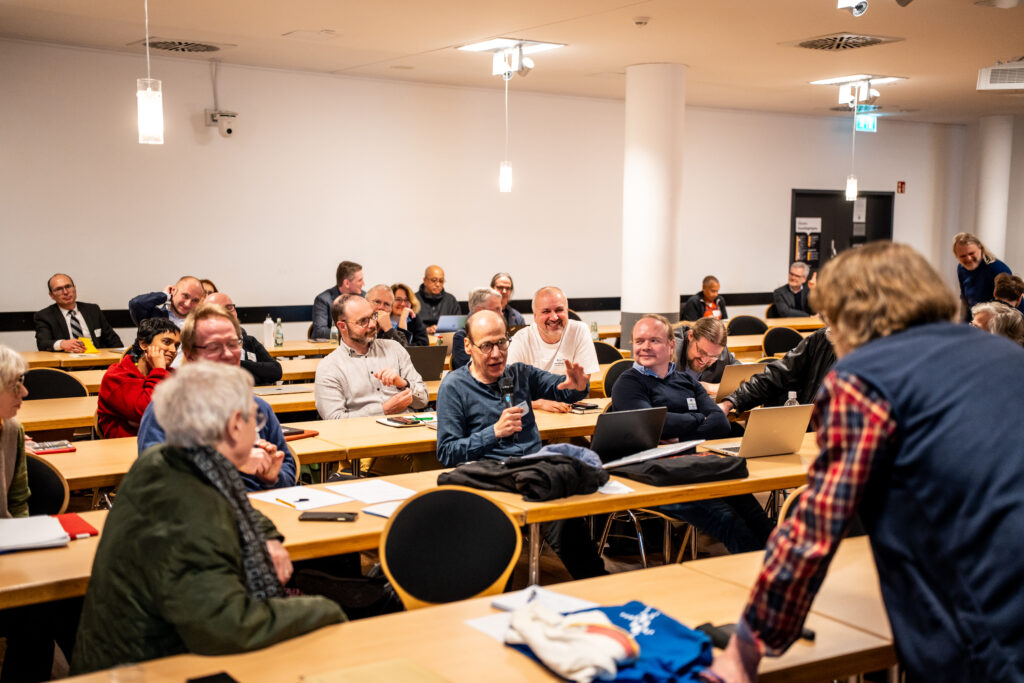
Of course, discussion on what freedom in research is, how it is practiced and how it should be supported institutionally was fiery, encompassing a broad variety of perspectives. Overall, there is agreement that this is how an exercise in academic freedom looks like: we are free and enabled institutionally to contradict each other. We note that the Cultures of Research conference took place shortly after a new US administration started exercising pressure on scientists and universities. Political pressure on academia will undoubtedly constitute a main concern for c:o/re in its second cycle of funding, shaping its future development, as we hope and anticipate that it will shape the future development of philosophical and social inquiry on technology in general.
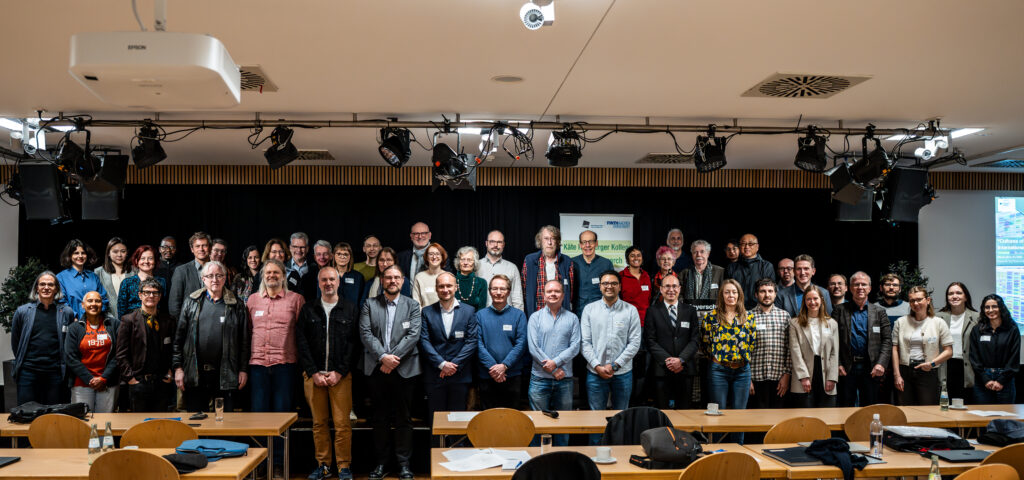
Unless otherwise noted, photos by Christian van’t Hoen.
The program with all speakers and titles of the conference can be found in this document.
“[T]here really isn’t a clear distinction between the analog and the digital” – Interview with Lori Emerson
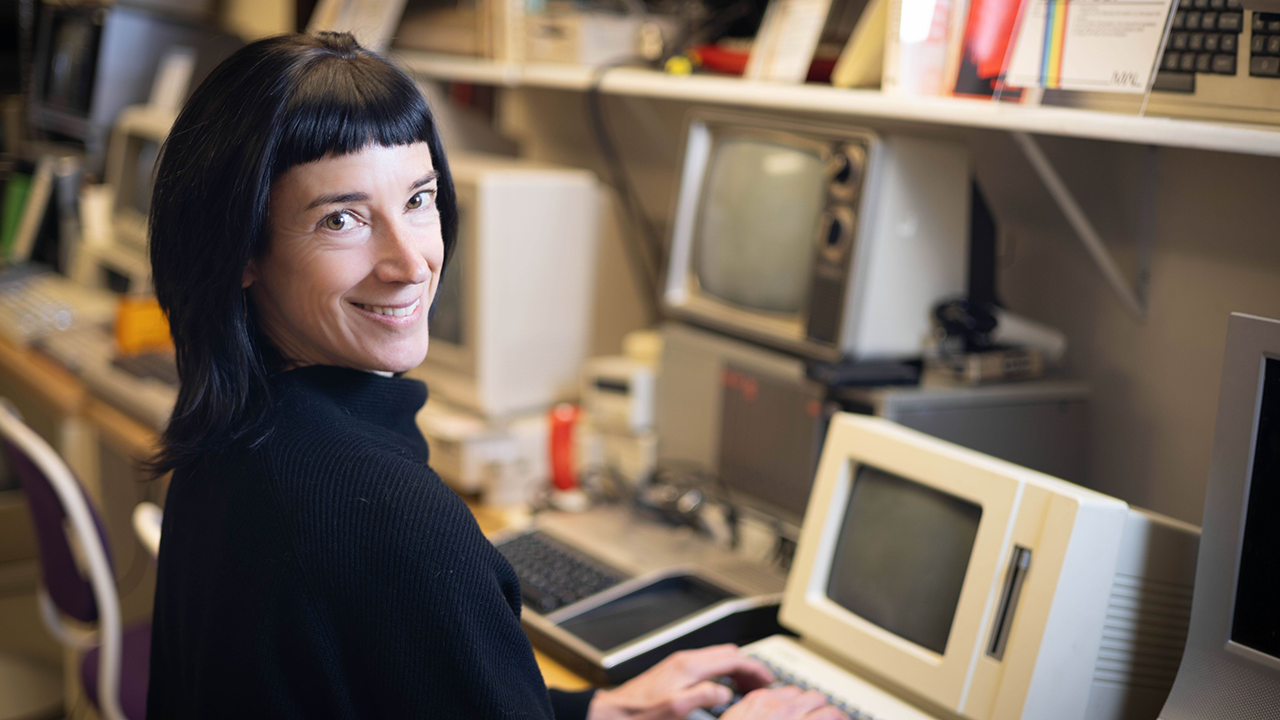
As part of the interdisciplinary workshop “After Networks: Reframing Scale, Reimagining Connections”, which will take place at the SuperC of RWTH Aachen University on April 16 and 17, 2025, media scholar Lori Emerson will come to Aachen and give a keynote speech about her new book “Other Networks: A Radical Technology Sourcebook” (Anthology Editions, 2025). We asked her a few questions in advance to get a better understanding of how she thinks about and works with networks.
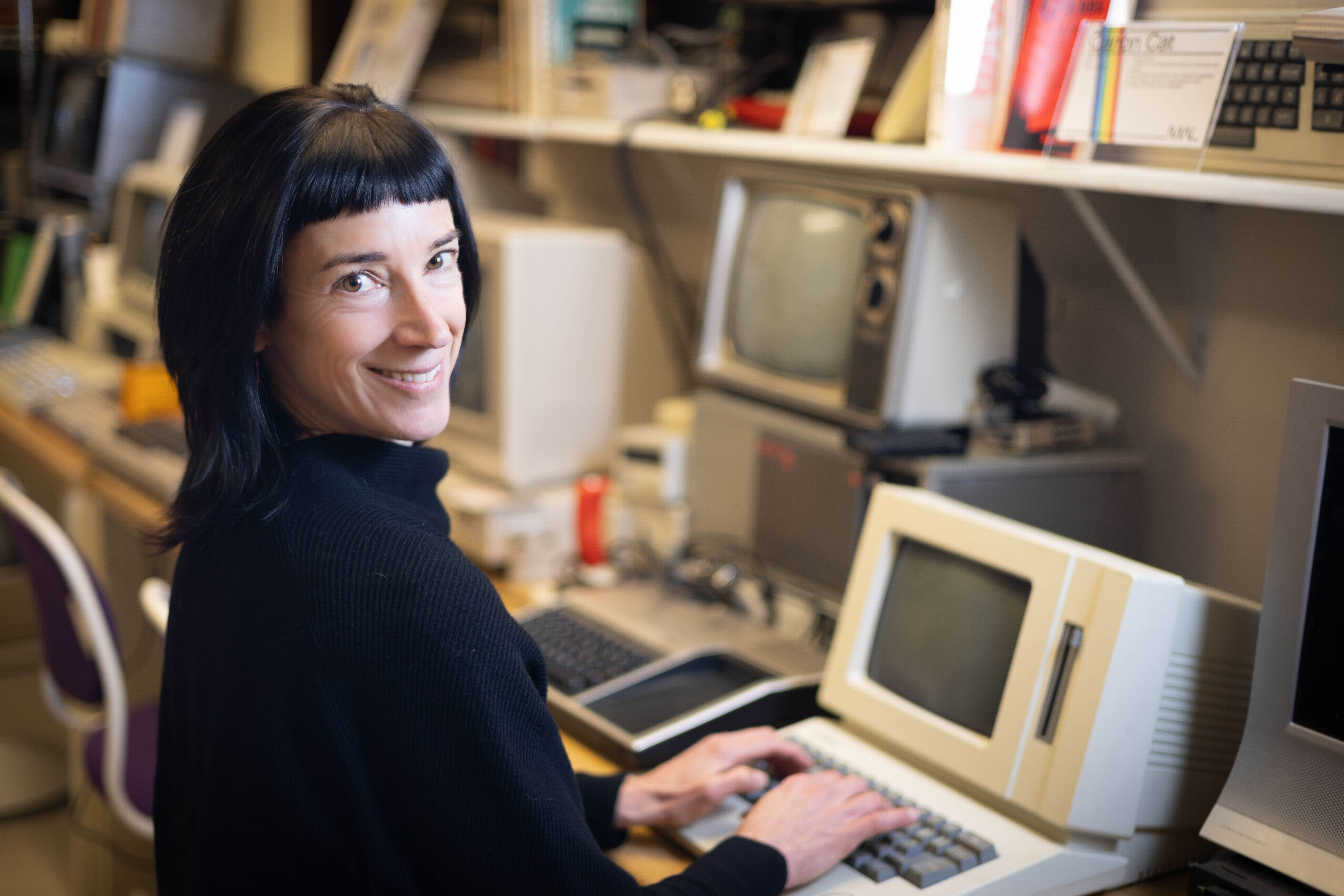
Lori Emerson
Lori Emerson is an Associate Professor of Media Studies and Associate Chair of Graduate Studies at the University of Colorado Boulder. She is also the Founding Director of the Media Archaeology Lab. Find out more on her website.
In your new book Other Networks: A Radical Technology Sourcebook, you present networks that existed before or outside of the internet, digital as well as analog. What would you say do all of these different models of networks have in common?
Many of the networks in Other Networks began as small experiments by a few individuals that didn’t necessarily have aspirations to make sure these networks had a global reach, or that these networks could not be replicated by other individuals, or that they would overtake every other kind of communication at a distance. More, because of their relative simplicity, most of these networks can be recreated today for small groups of people. My hope is that, along with my colleague Dr. libi striegl who is the Managing Director of the Media Archaeology Lab (the lab I direct and that has supported a lot of the research behind Other Networks), we will continue to create “recipes” for building small “other networks.” We have already published a small pamphlet called Build Your Own Mini FM Transmitter that very clearly and carefully walks people who have no background at all in electronics through the process of making what’s basically a micro-broadcasting station.

Do you have a favorite network example?
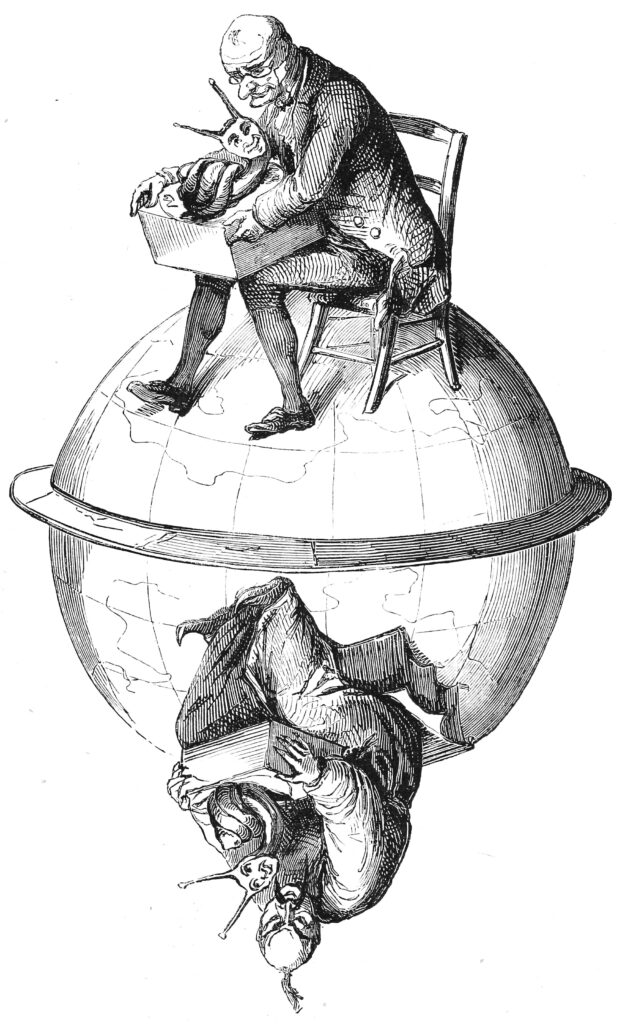
I am fond of all the networks in Other Networks! But one particular network I like to talk about is an example of an imaginary network: the pasilalinic-sympathetic compass, also referred to as ‘snail telegraph.’ This network was created by French occultist Jacques-Toussaint Benoît to demonstrate that snails are capable of instantaneously and wirelessly transmitting messages to each other across any distance. Benoît’s theory was that in the course of mating snails exchange so-called “sympathetic fluids” which creates a lifelong telepathic bond which also enables them to communicate with each other. He believed he could induce snails to transmit messages faster and more reliably than by wired telegraph by placing a snail on top of a letter and then, with the prodding of an electric charge, the snail would transmit the letter to another snail placed at some distance. The pasilalinic-sympathetic compass itself consisted of twenty-four different wooden structures containing a zinc bowl, cloth that had been soaked in copper sulphate, and a snail glued to the bottom of the bowl. Benoît unsuccessfully demonstrated the snail telegraph to a journalist from La Presse, Jules Allix, in October 1850.
What is the materiality of a network? In your new book, you separated them into four categories: Wireless, Wired, Hybrid and Imaginary. How was the process of organizing the networks into these different categories? Do you think it helps to visualize how a network can be materialized?
Creating a taxonomy for organizing these other networks was the most challenging part of writing Other Networks and, like any taxonomy, the system I settled on is still far from perfect. It took me many months to come up with a system for organizing networks according to their underlying infrastructure and that didn’t simply replicate historiographic conventions of accounting for technological inventions chronologically or by inventor. In other words, I wanted to underscore that networks emerge, disappear, and re-emerge slightly configured or re-combined over and over again; they also are rarely the work of a single person. More, accounting for networks in terms of chronology or “inventor” usually distracts us from seeing networks as material. Today, despite all the excellent work that has been done to reveal the material underpinnings of the internet (from its undersea cables to cable landing stations etc.), still the vast majority of people don’t know where the internet is, how it works, or where it came from. It might as well be immaterial! By contrast, I wanted to make it clear in Other Networks how, for example, there’s radio in the internet; that radio is part of the electromagnetic spectrum; that, even though we can’t see it, the electromagnetic spectrum is a ubiquitous natural resource; and that we as individuals and as communities can learn how to access this natural resource. Perhaps it’s old fashioned to say so, but I still believe that understanding the materiality of networks and how they work empowers us to build our own networks.

Where do you see the future of networks? In the digital or analog space?
One thing that became clear to me in the course of doing research for Other Networks is that there really isn’t a clear distinction between the analog and the digital like I was taught in graduate school. Telegraph communications that use, for example, morse code and that are transmitted over telegraph or telephone wires are digital in the sense that they are pulses of electricity in much the same way that digital computers use pulses of electricity to indicate 1’s and 0’s. In this sense, I think the future of networks is less about whether they’re analog or digital and more about whether they are built for small, local communities; whether they are cooperatively owned rather than corporate-owned; whether they can be maintained over the long run without resorting to blackboxing; and, finally, whether they have built-in structures to resist surveillance, tracking, and monetization.
Thank you so much for the interview, Lori!
More information about the workshop, the program and registration can be found on this website.
Header photo: Jenna Maurice


